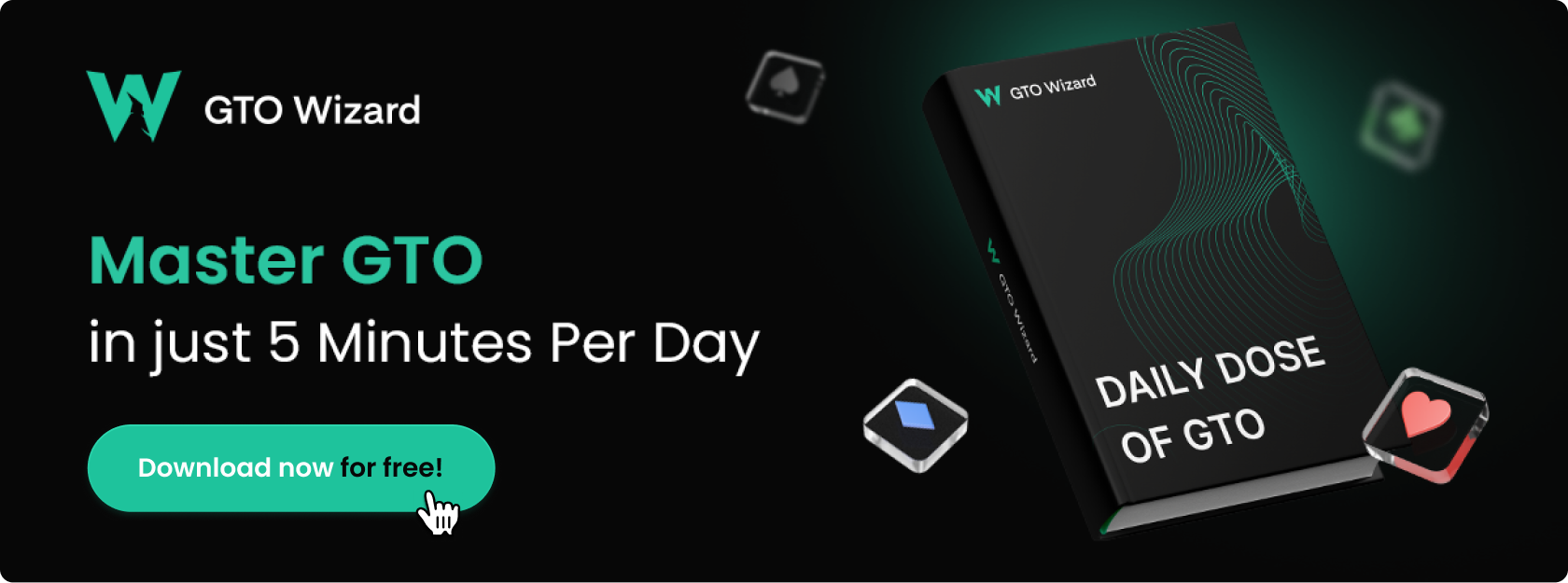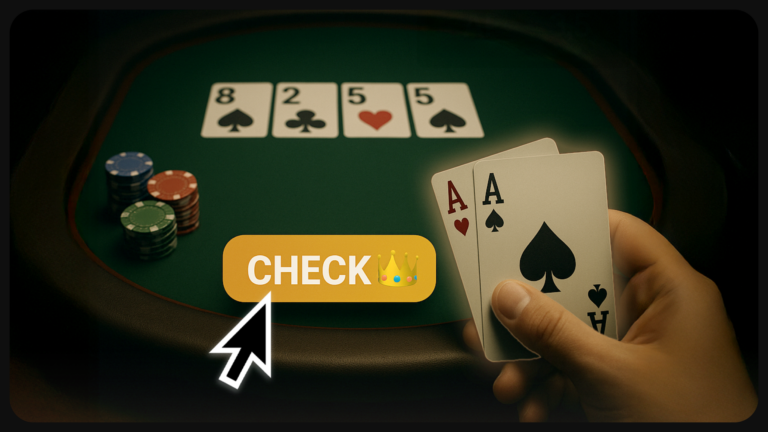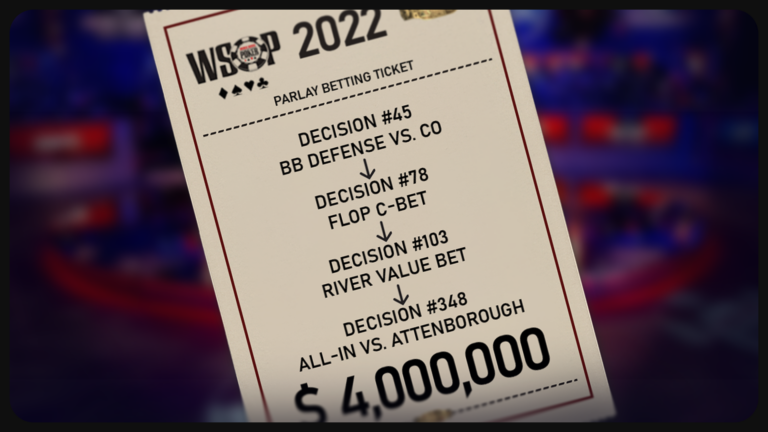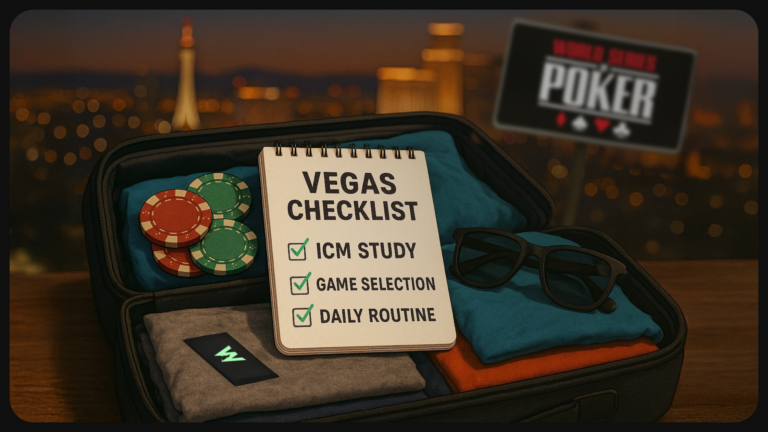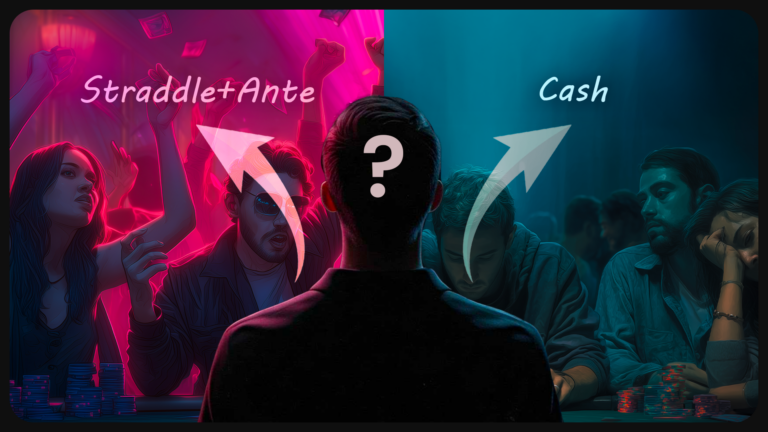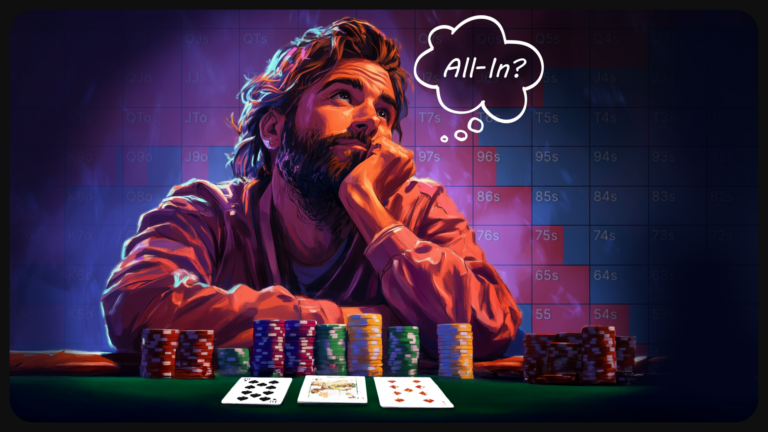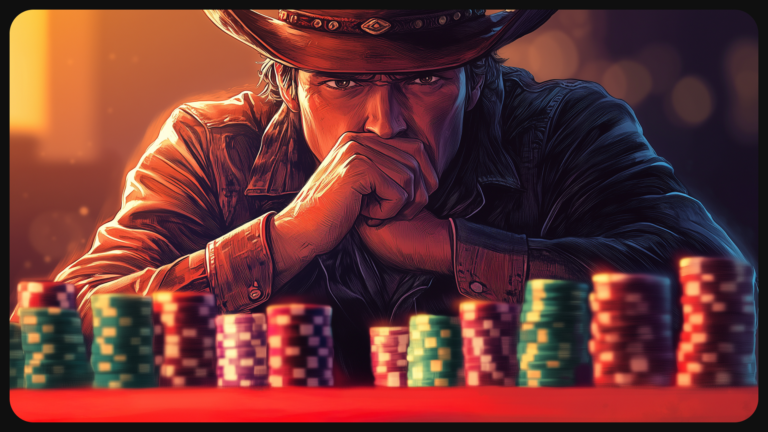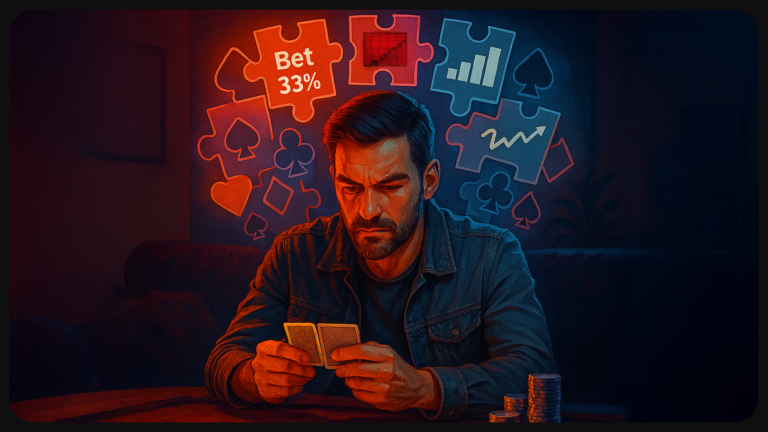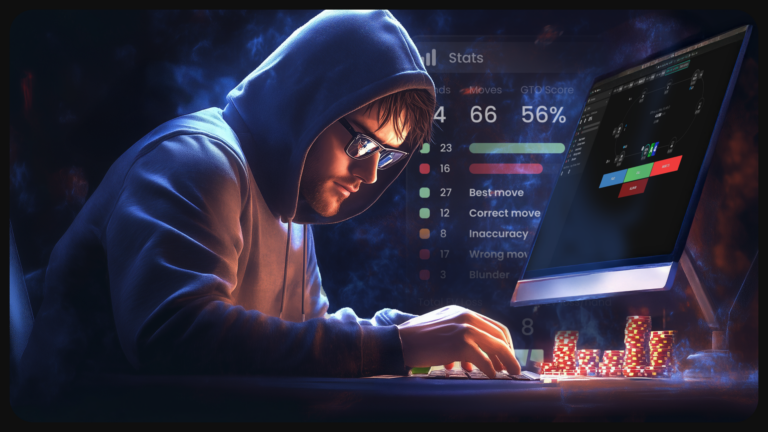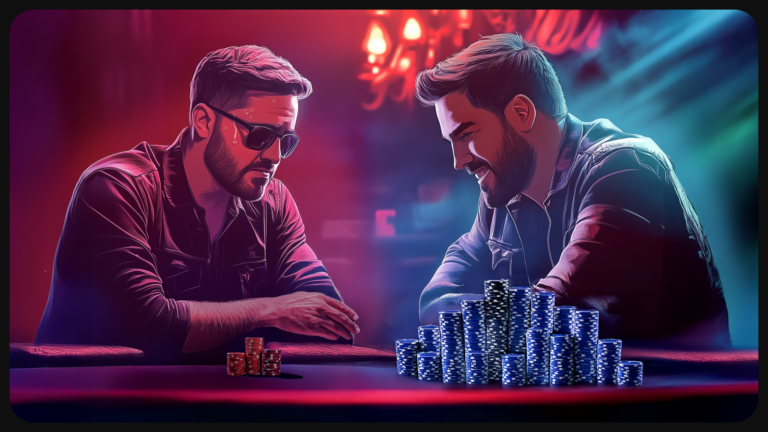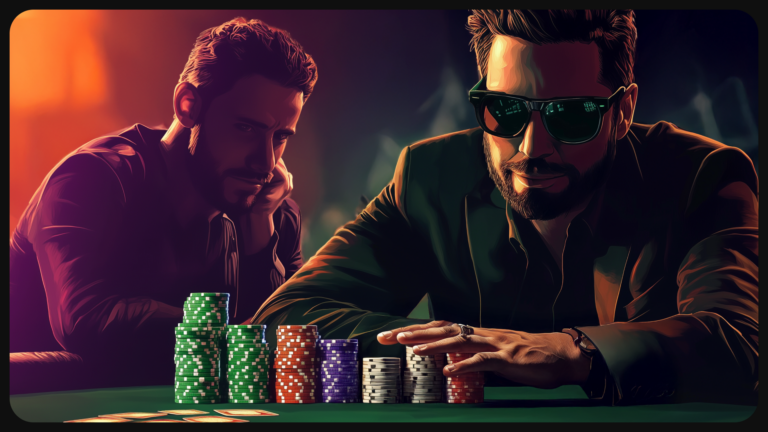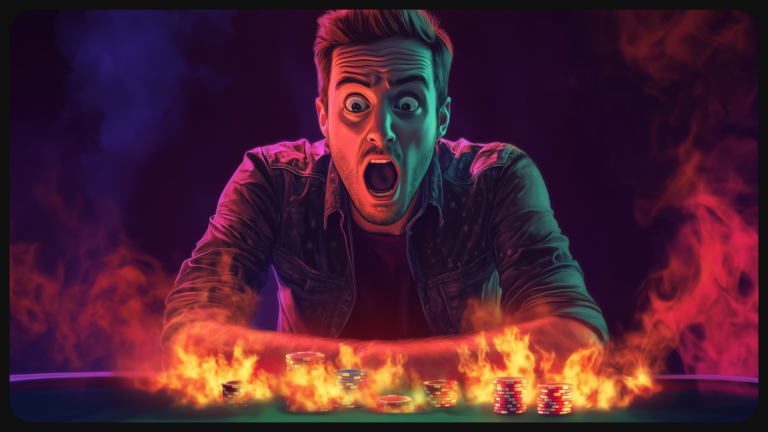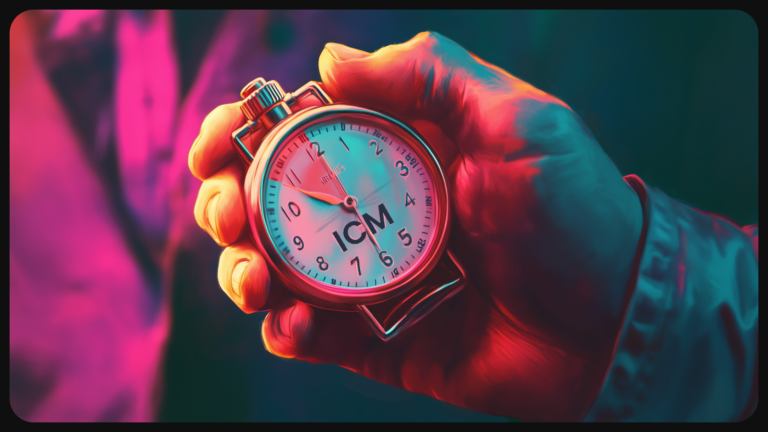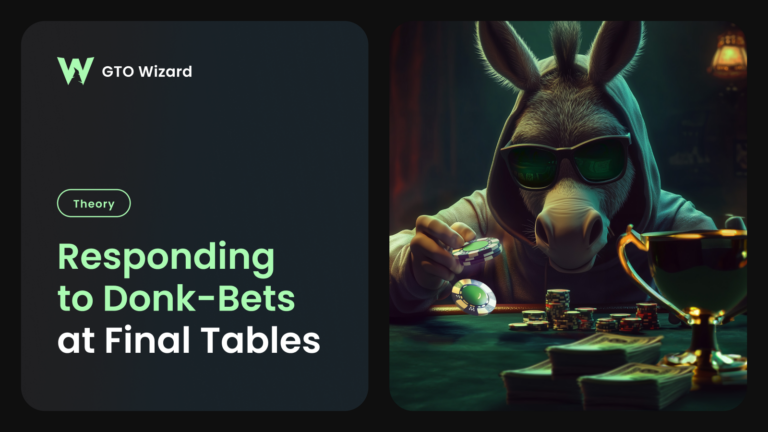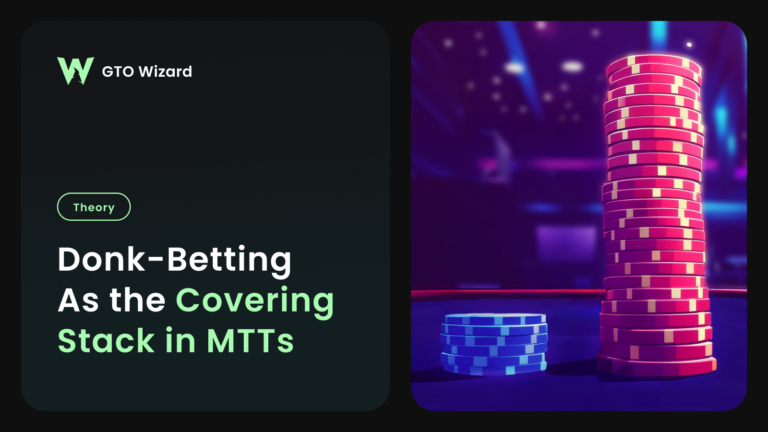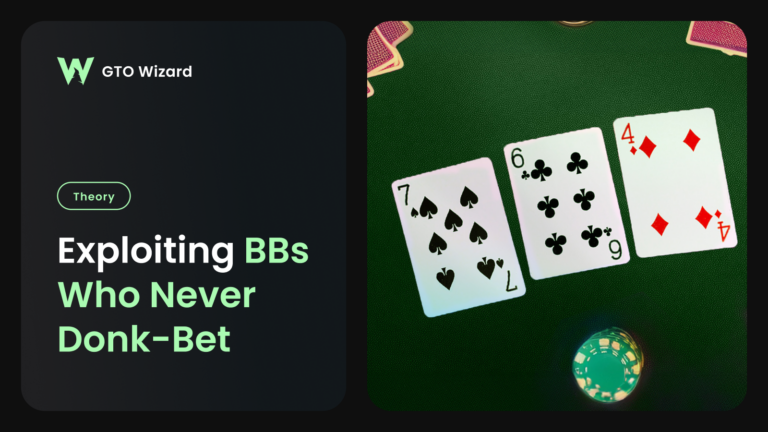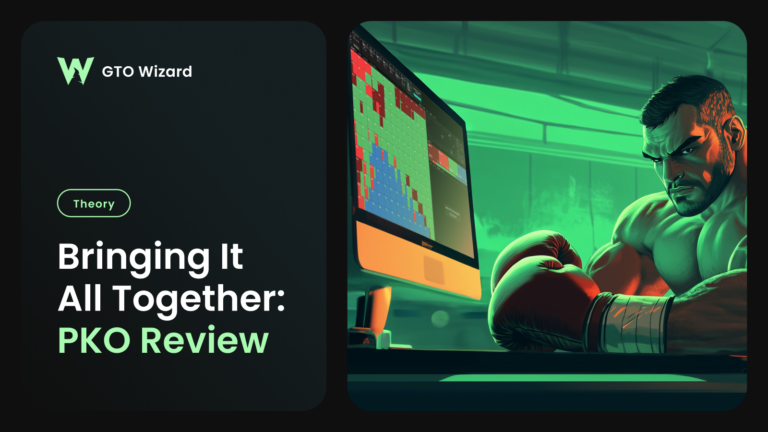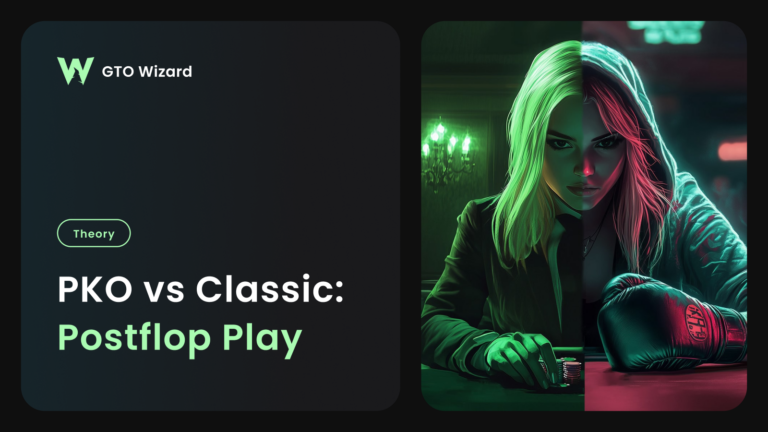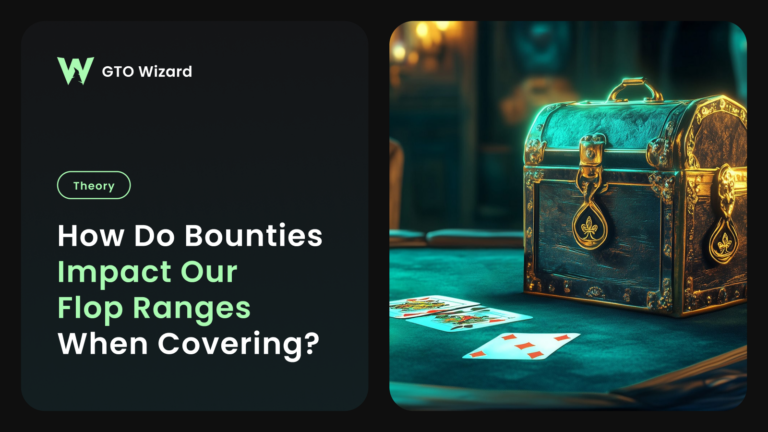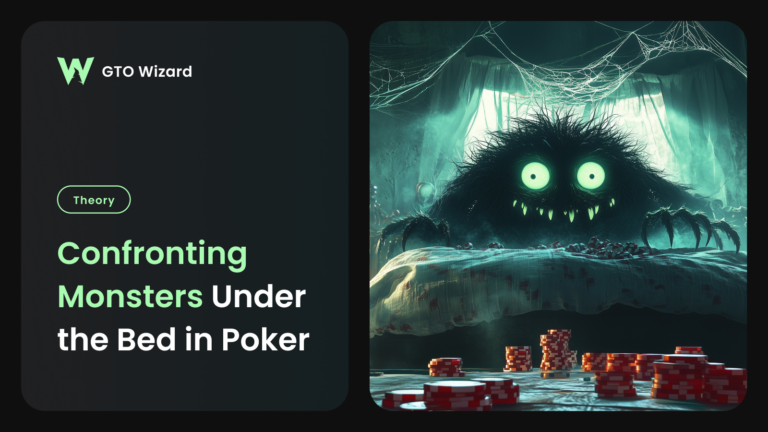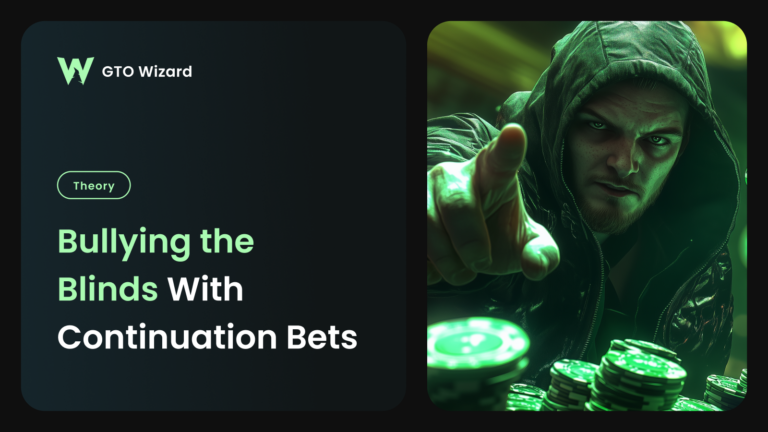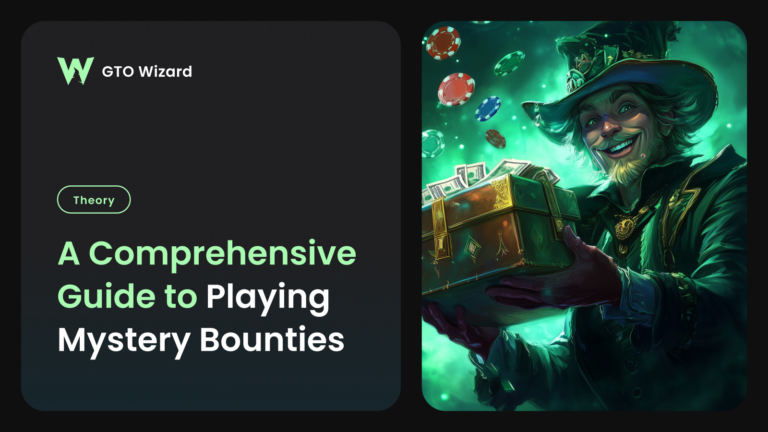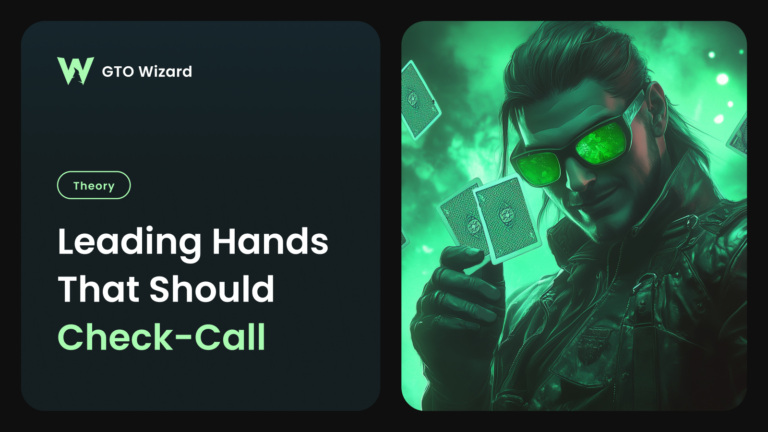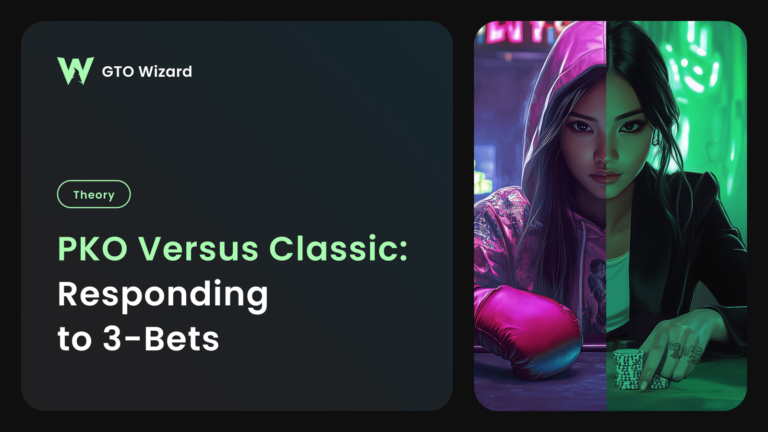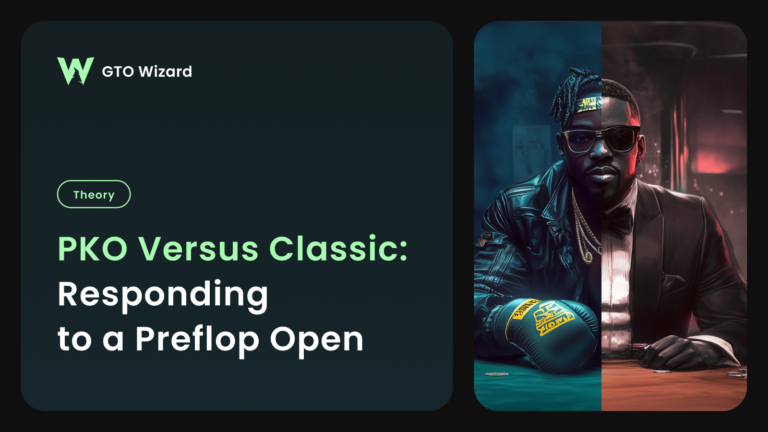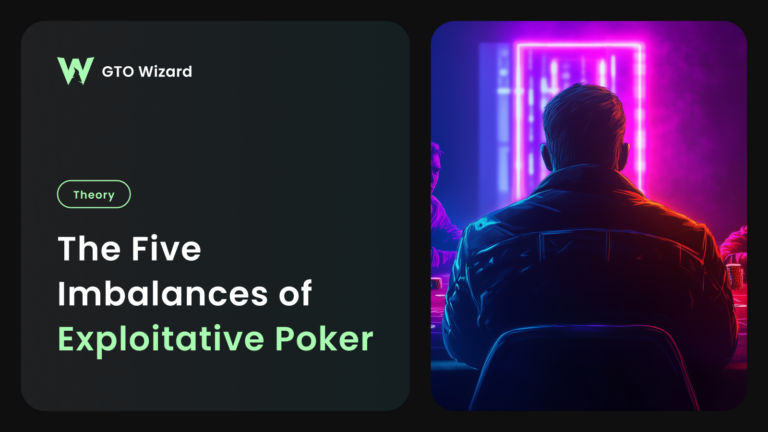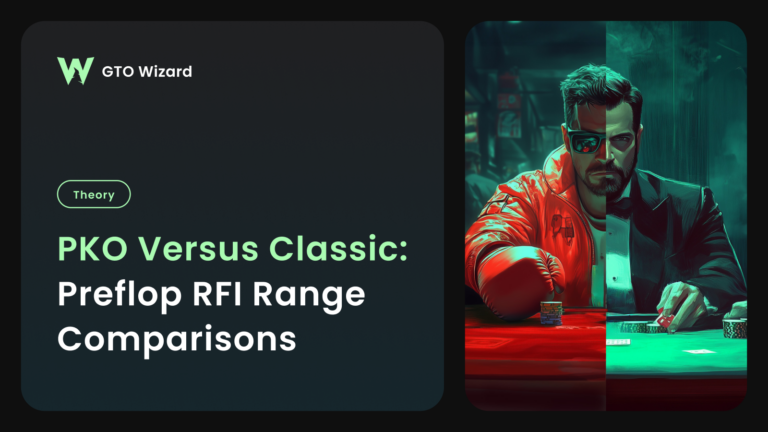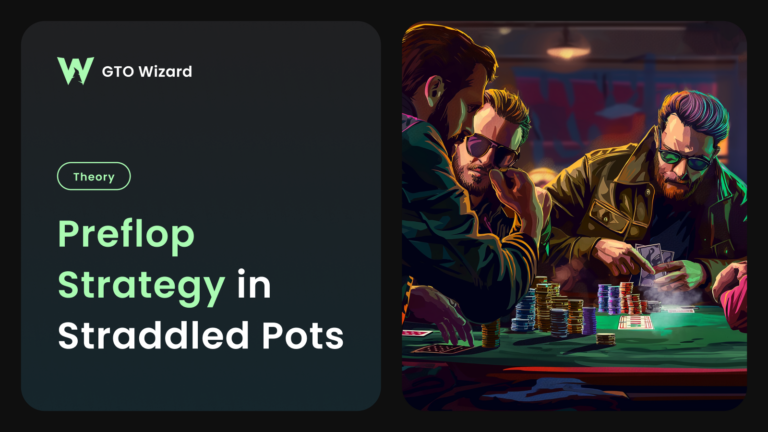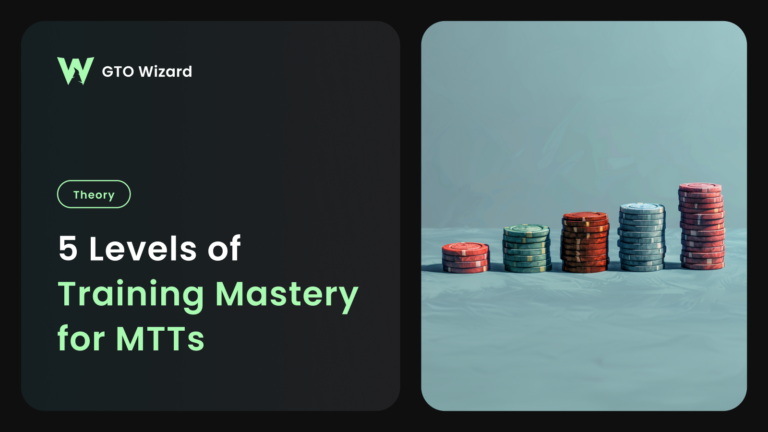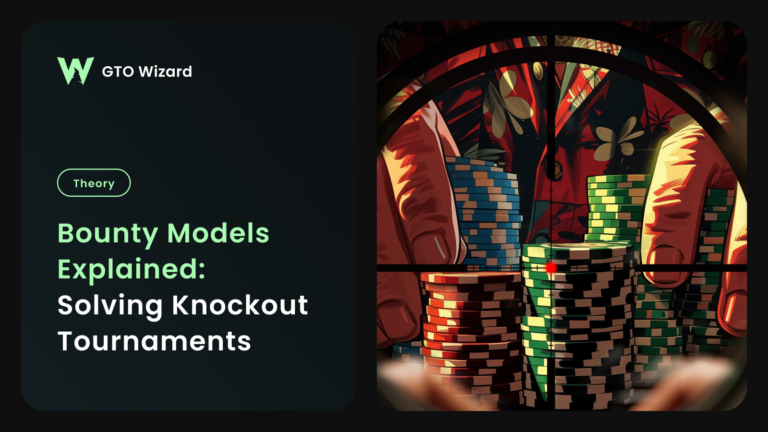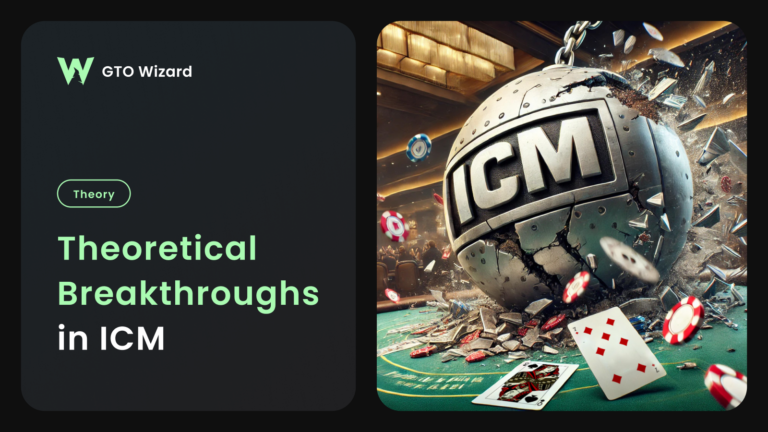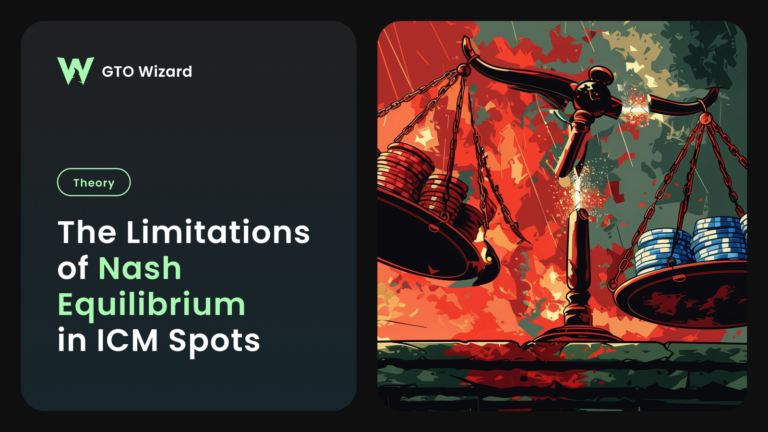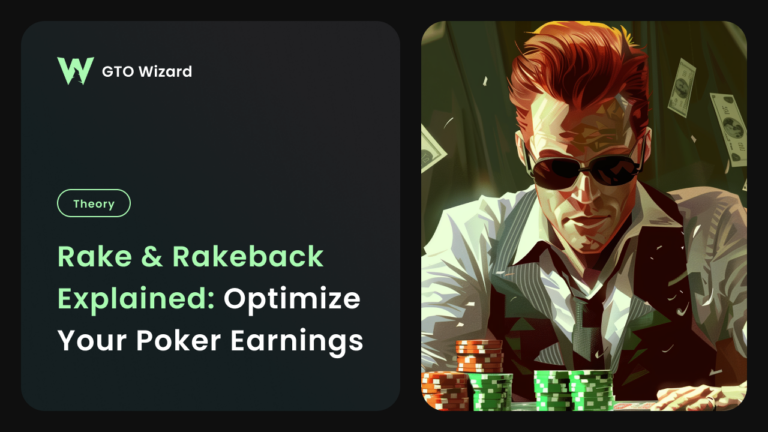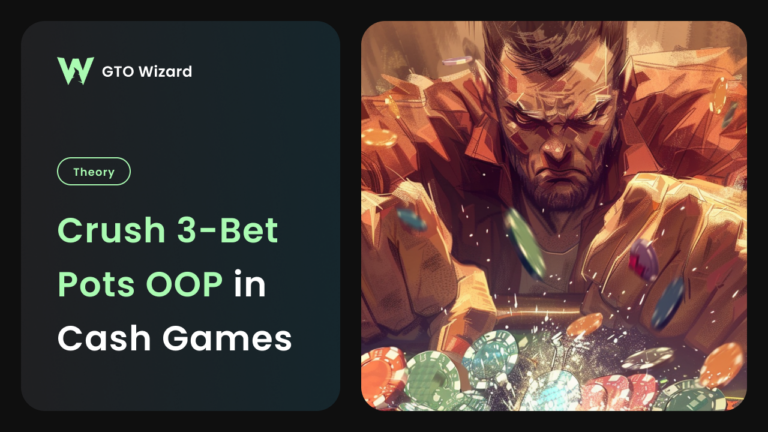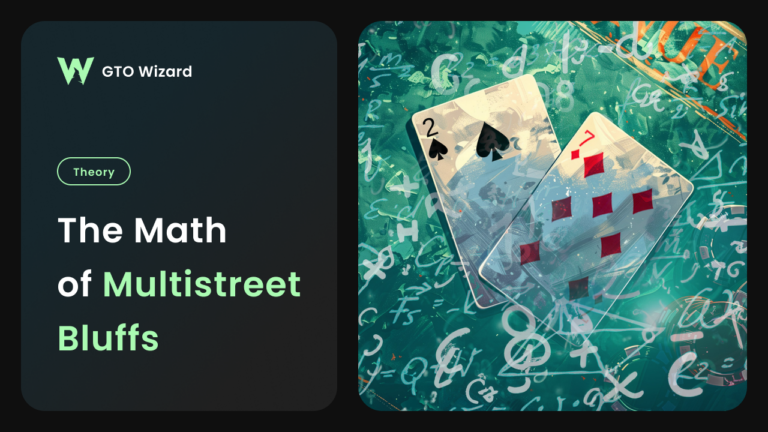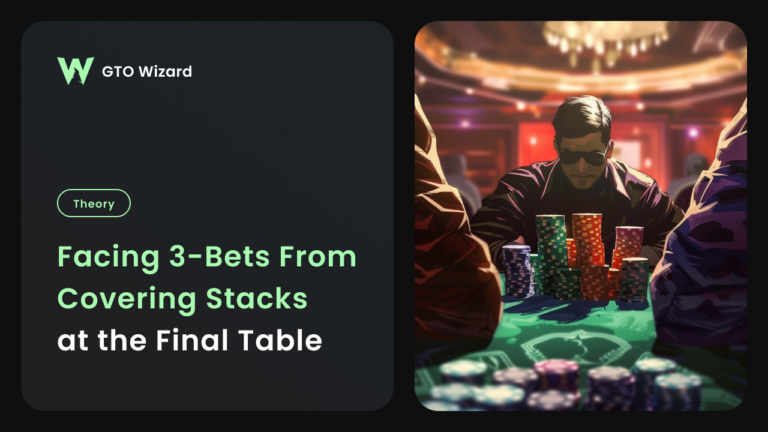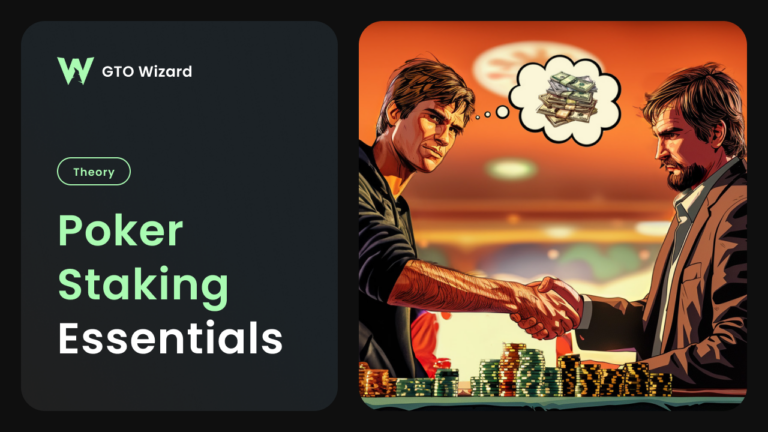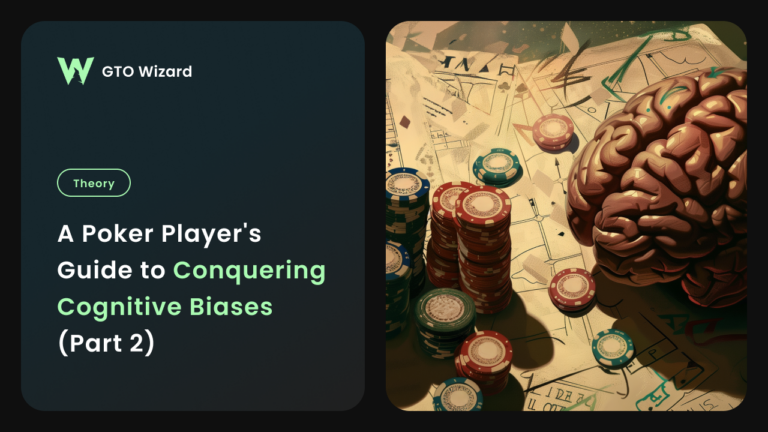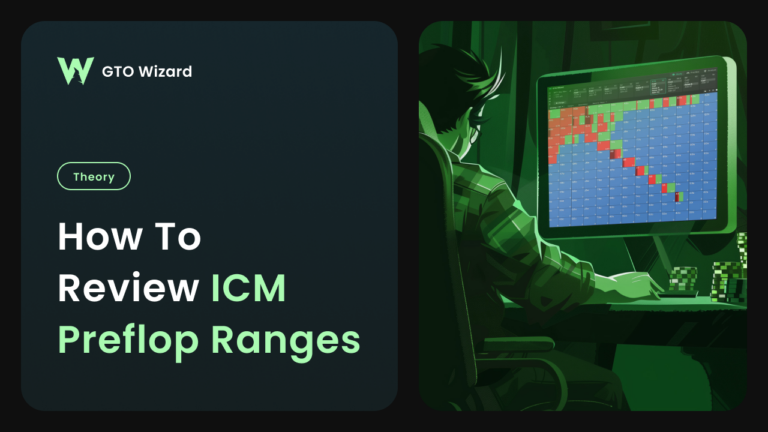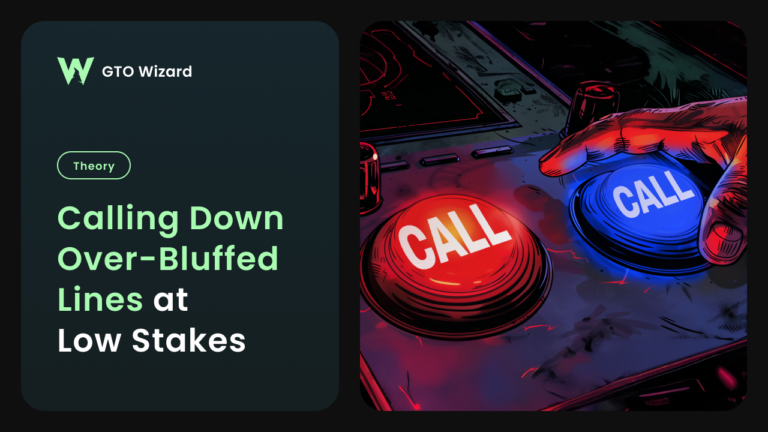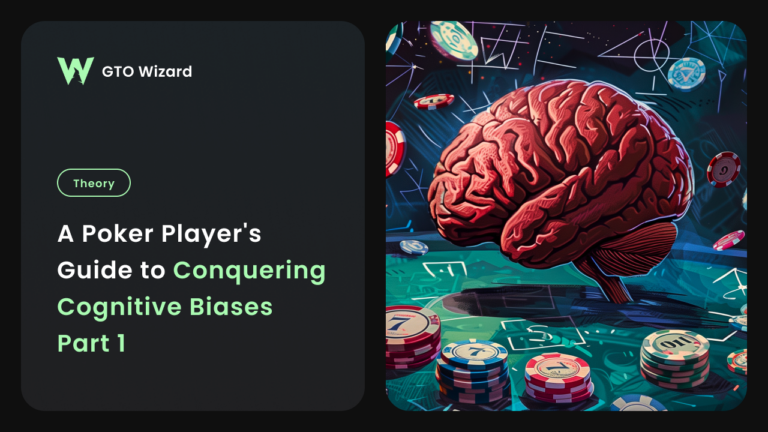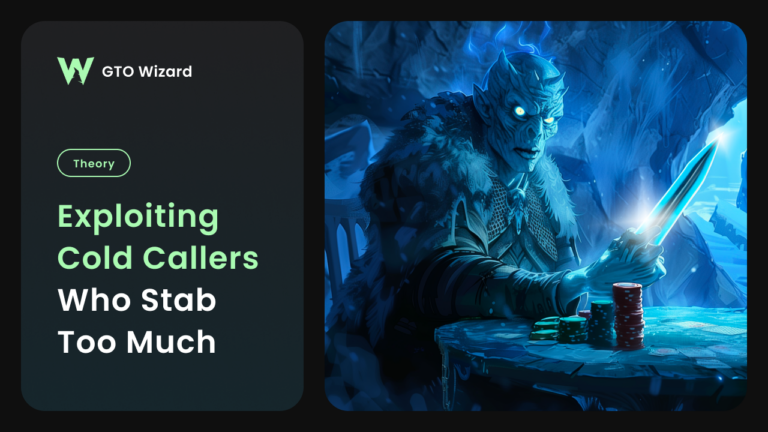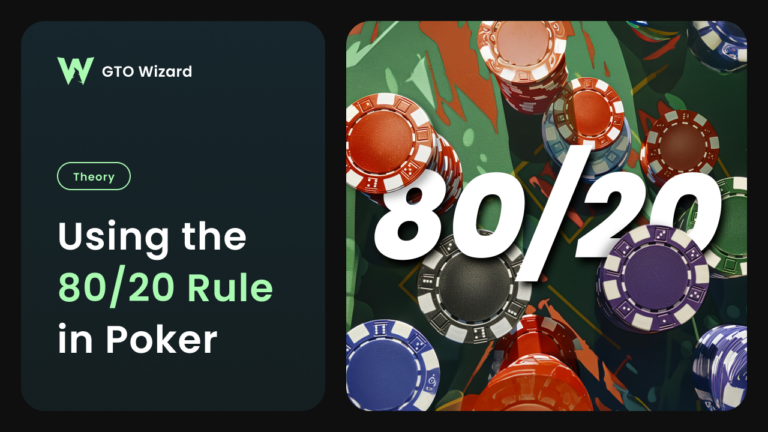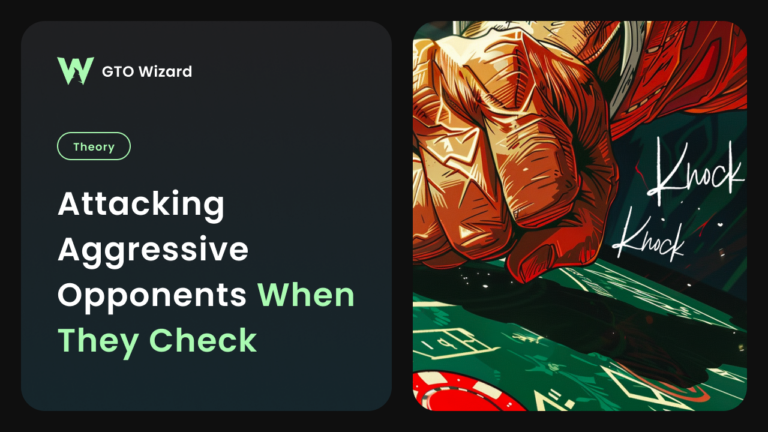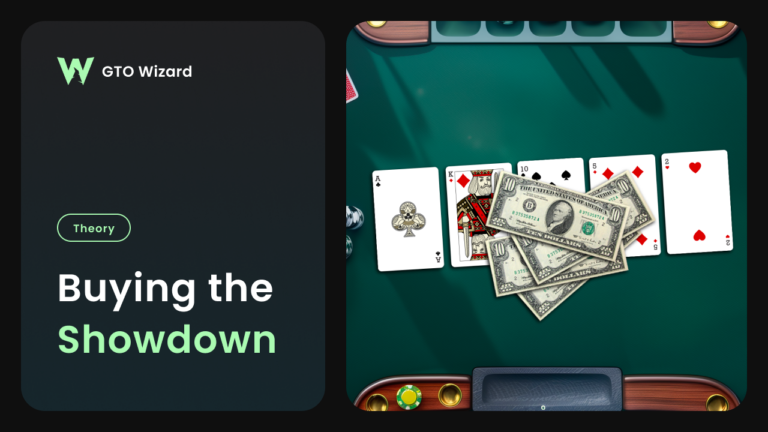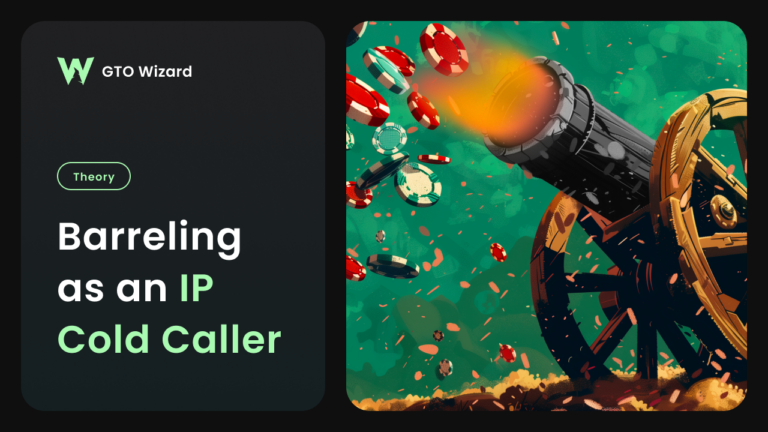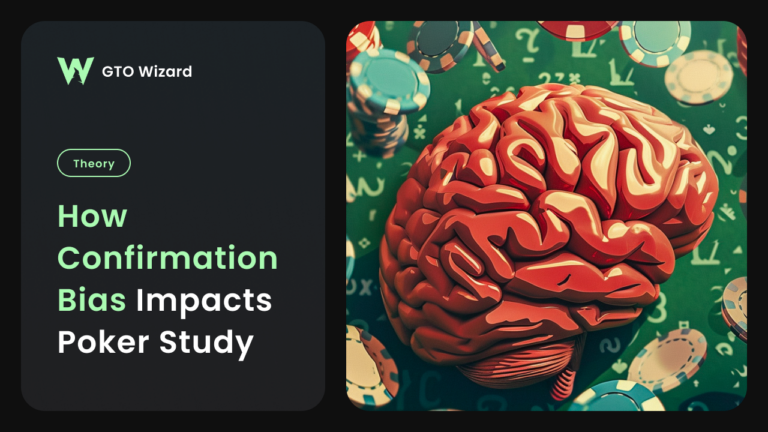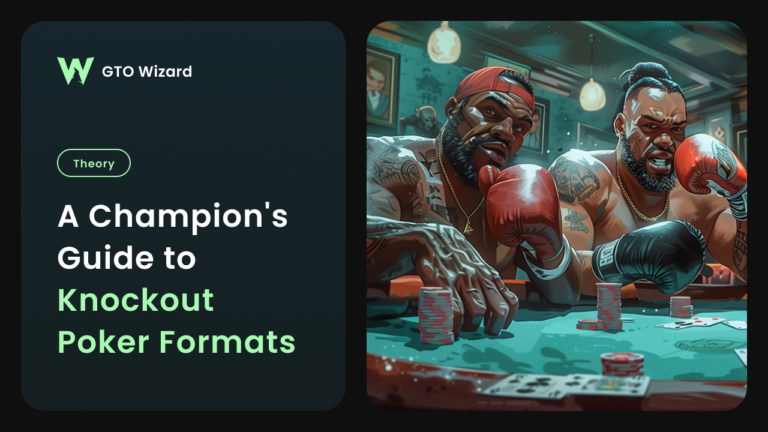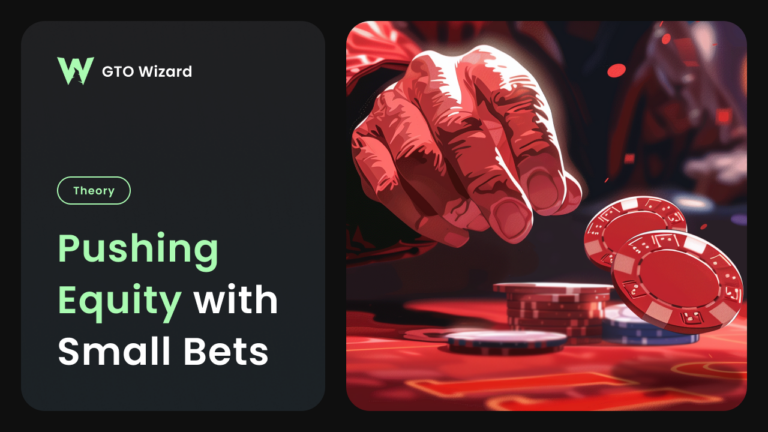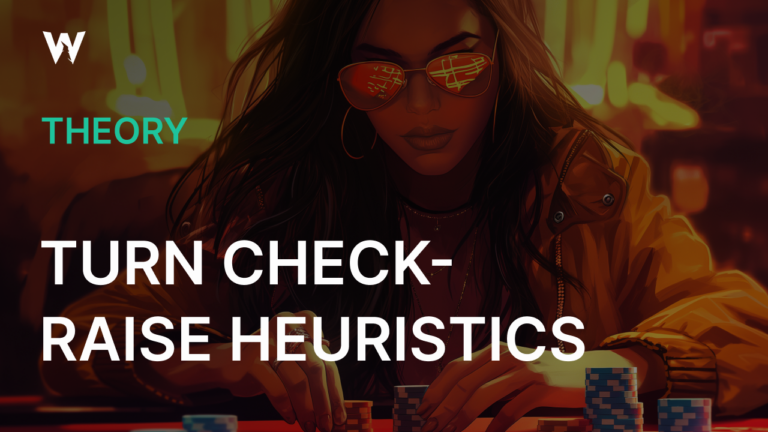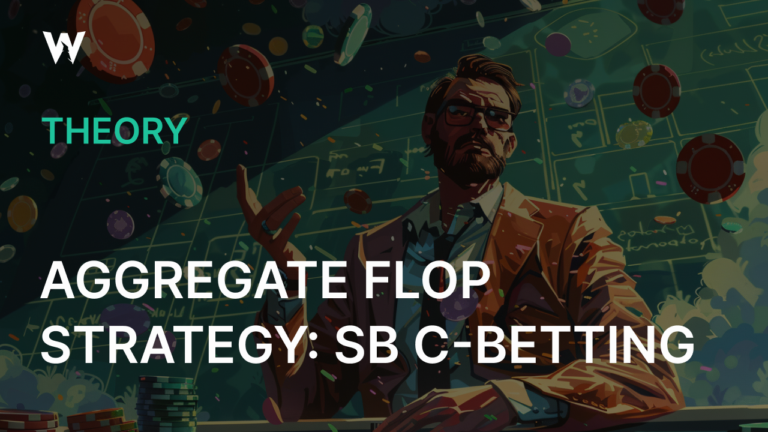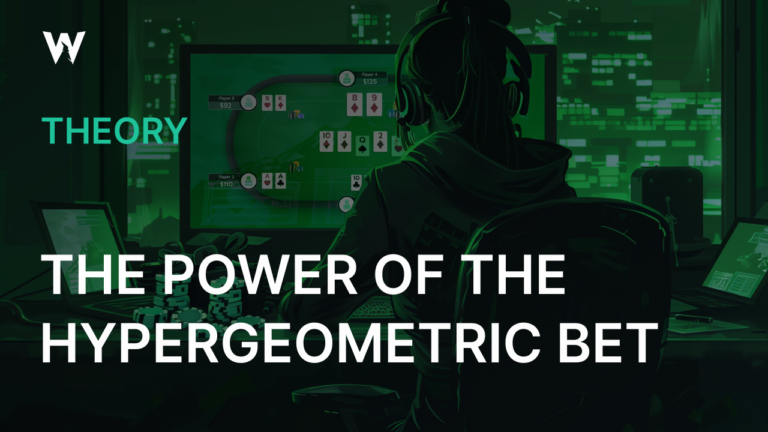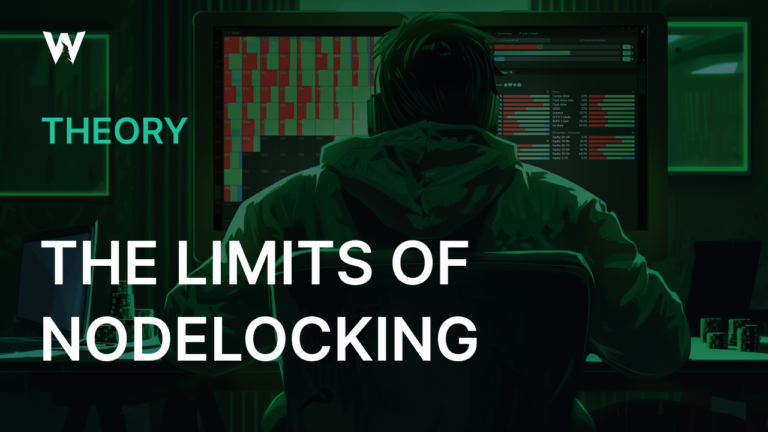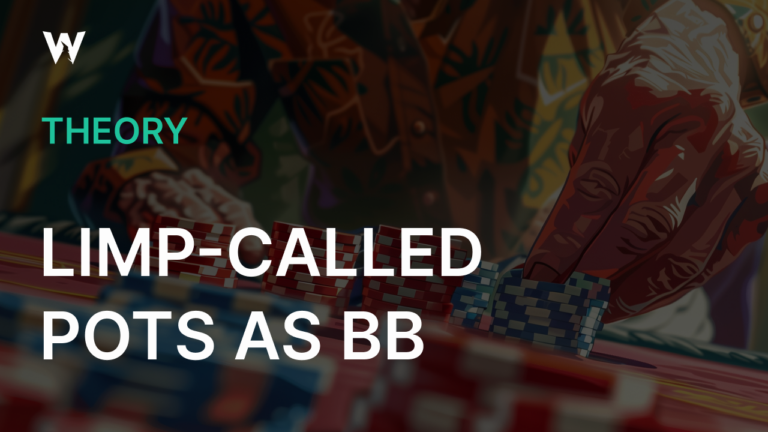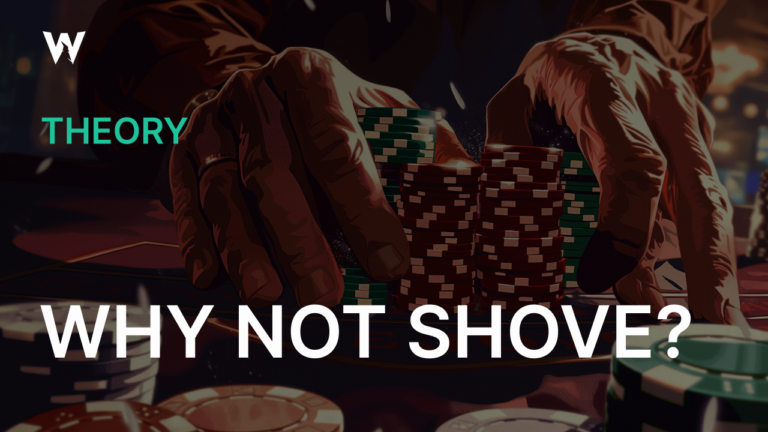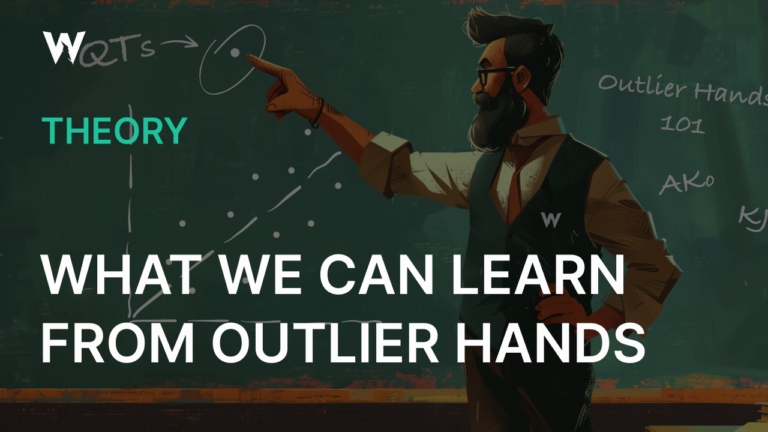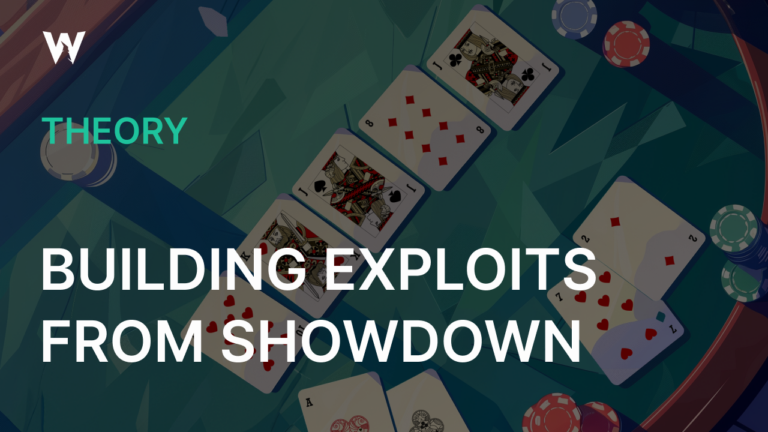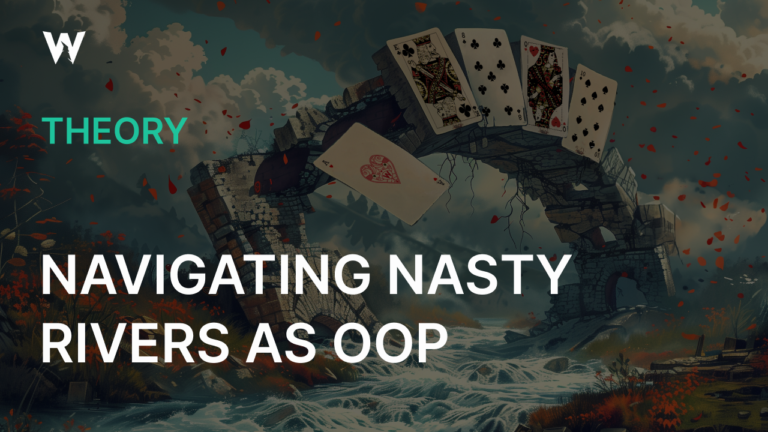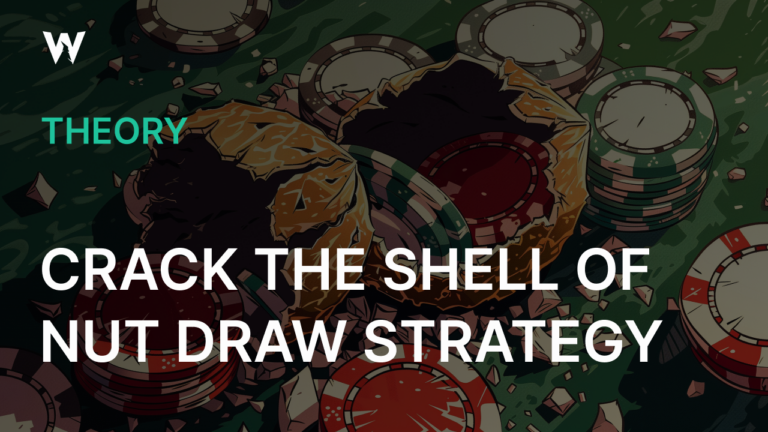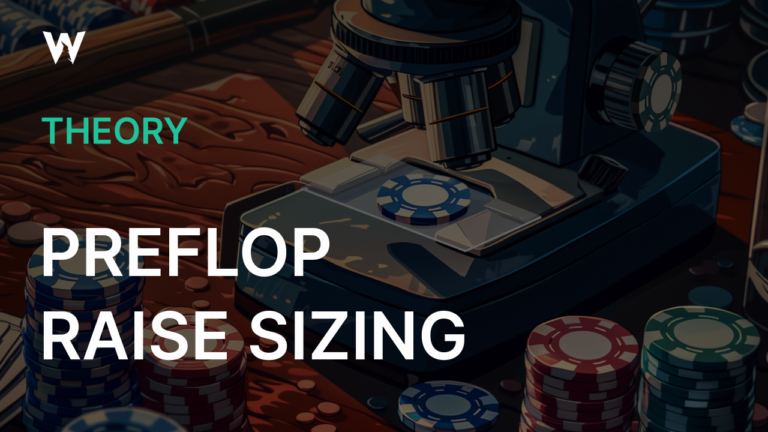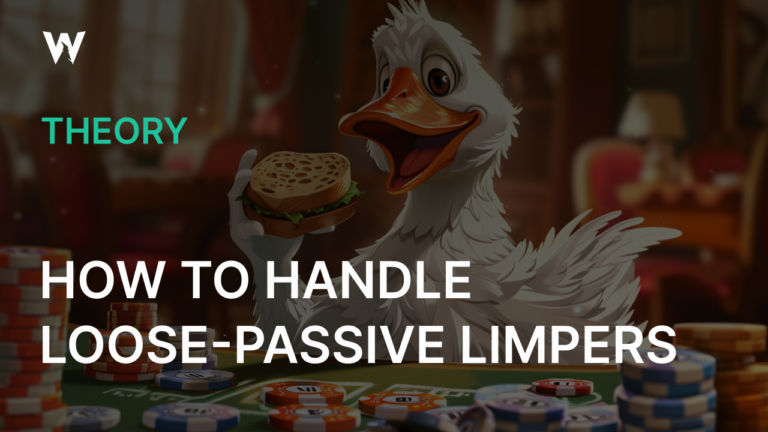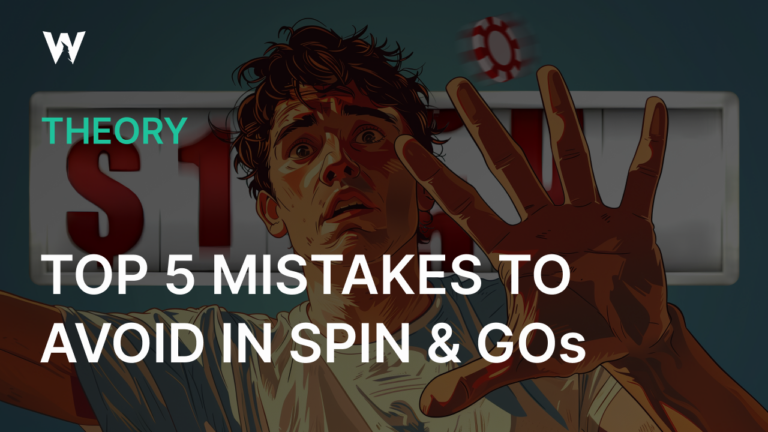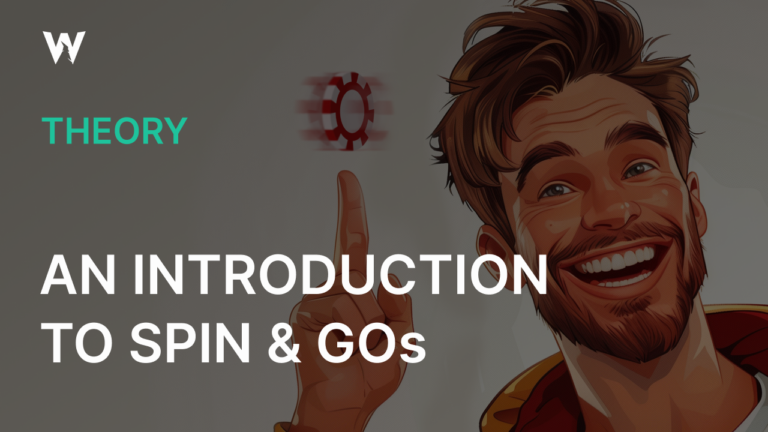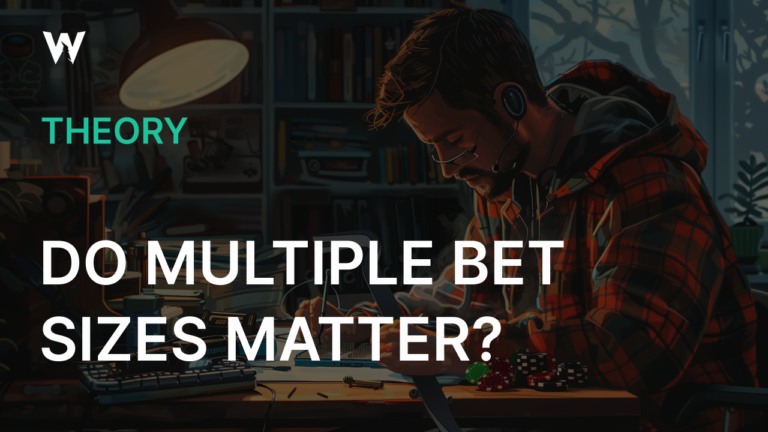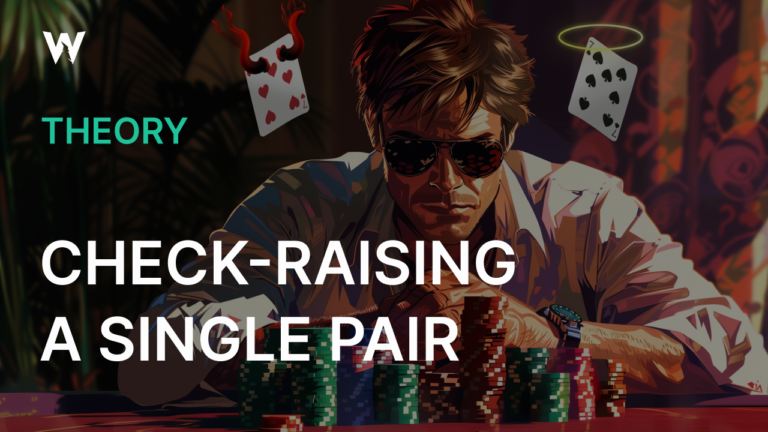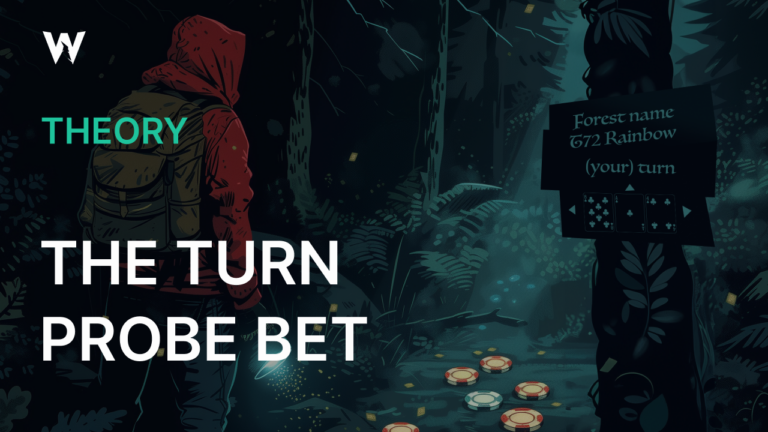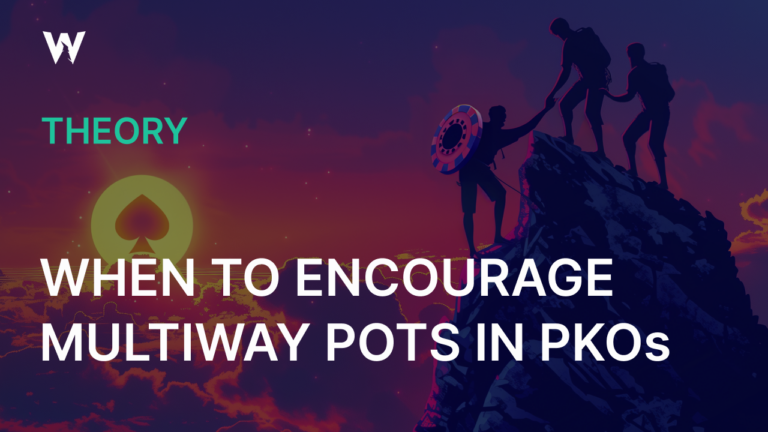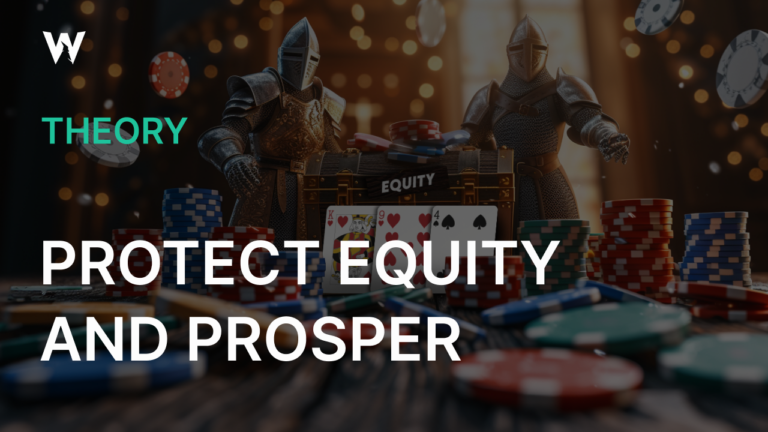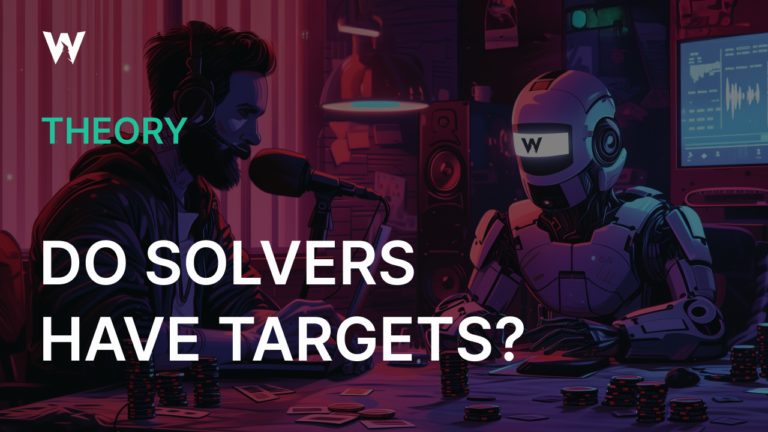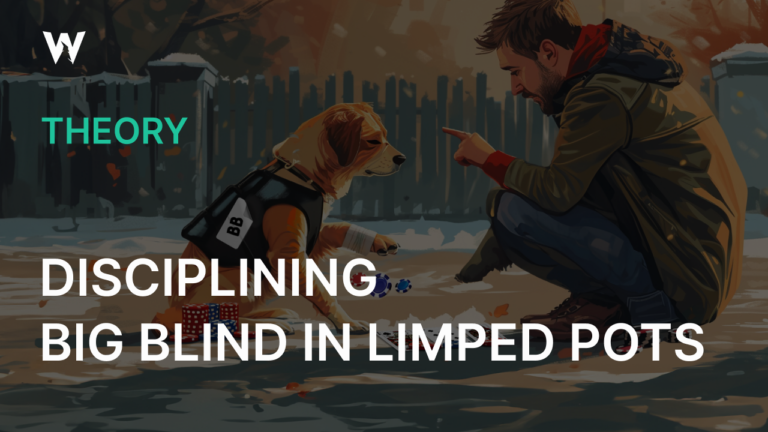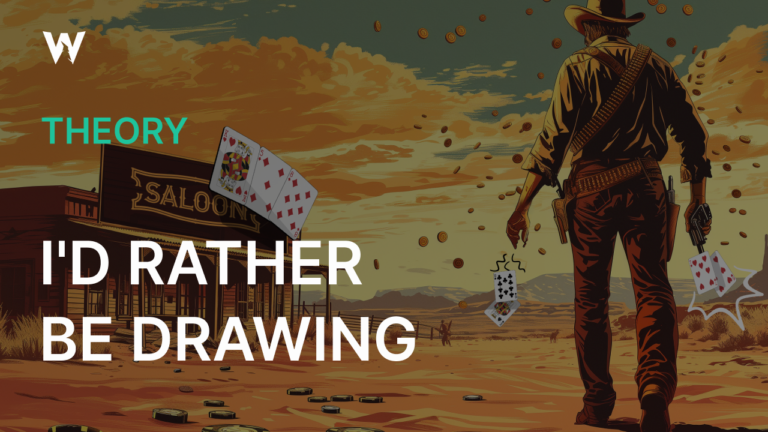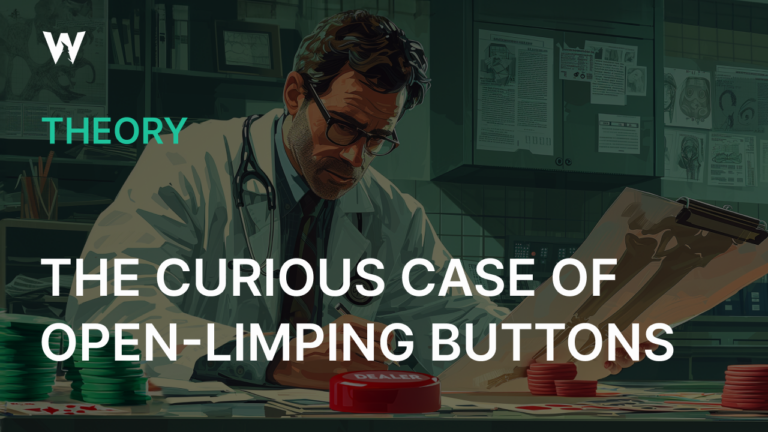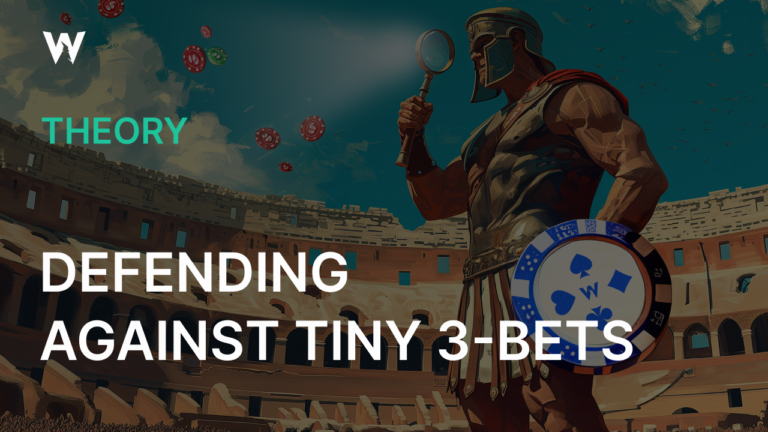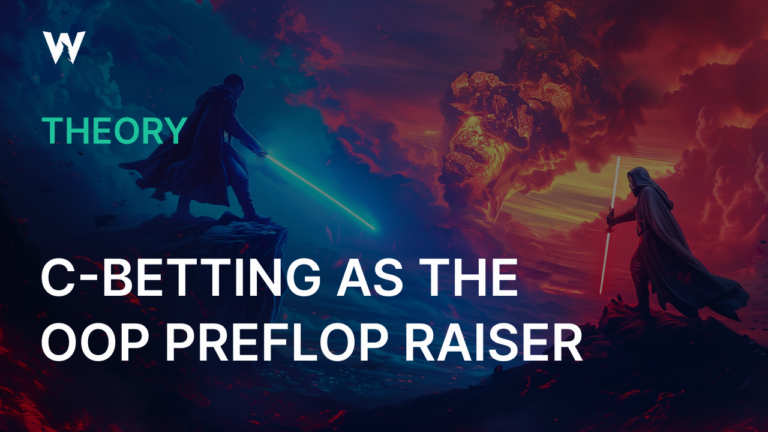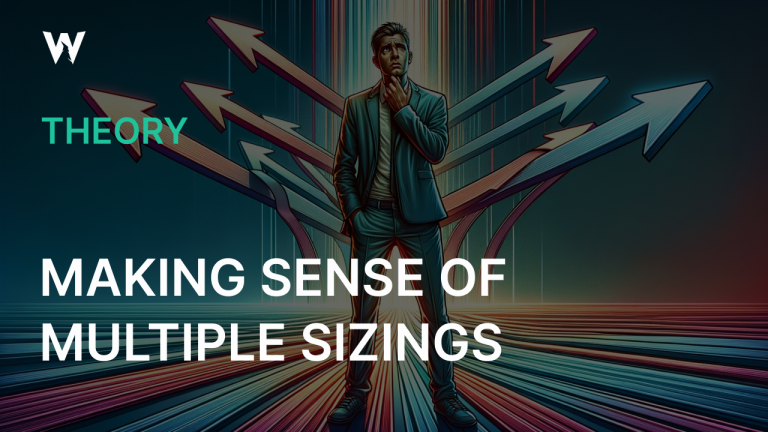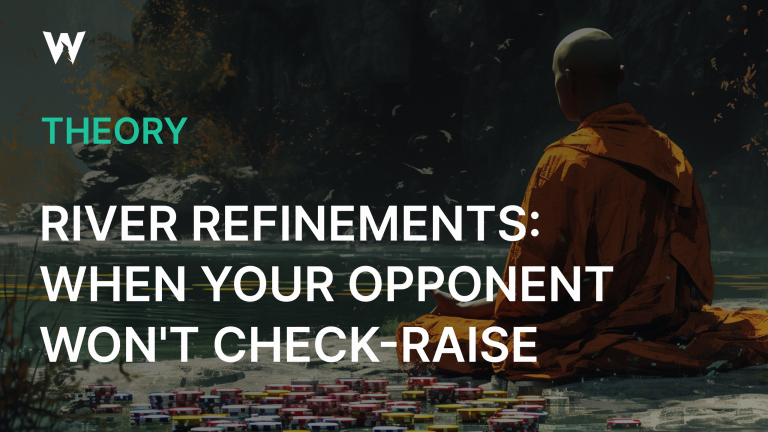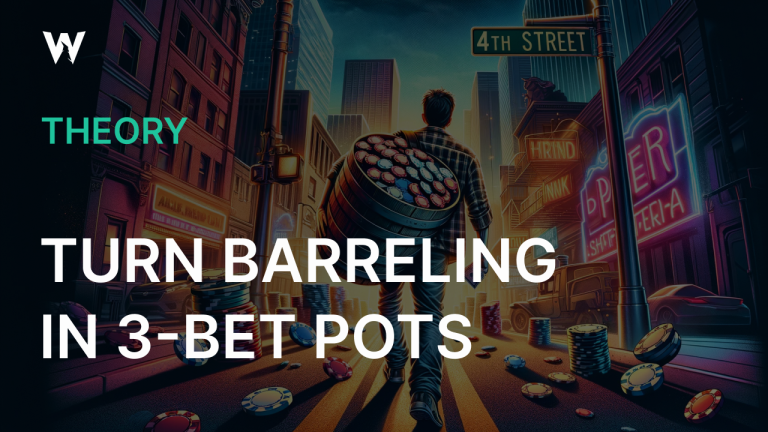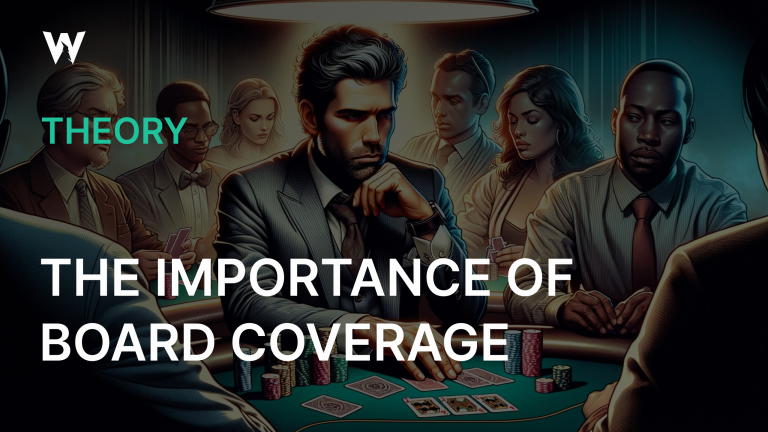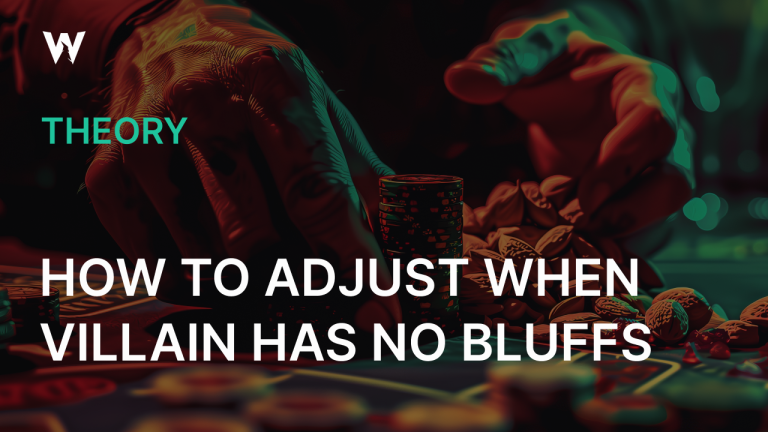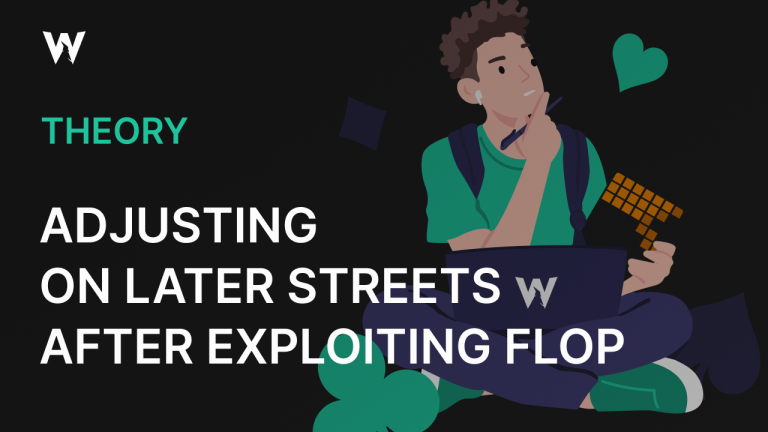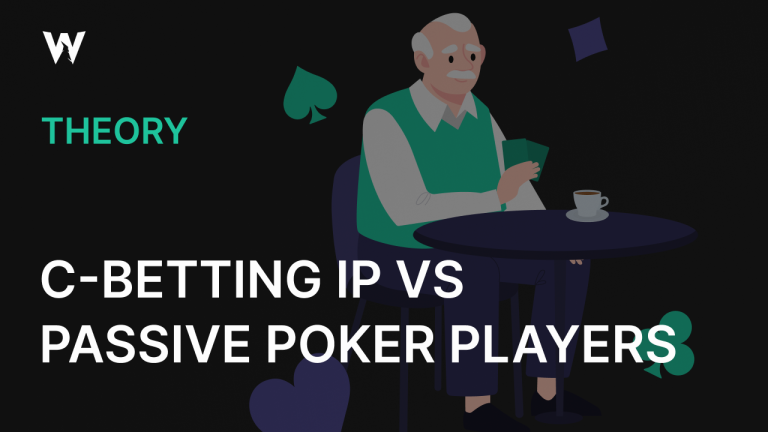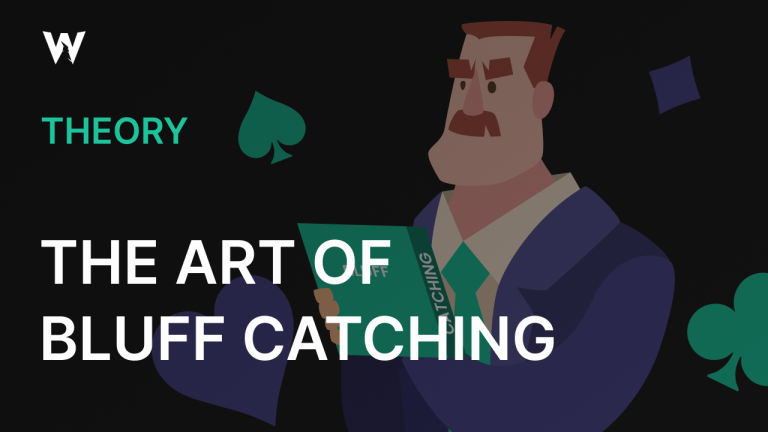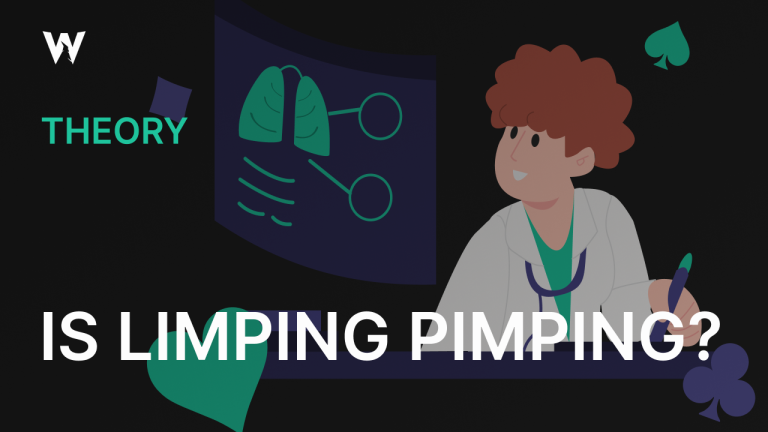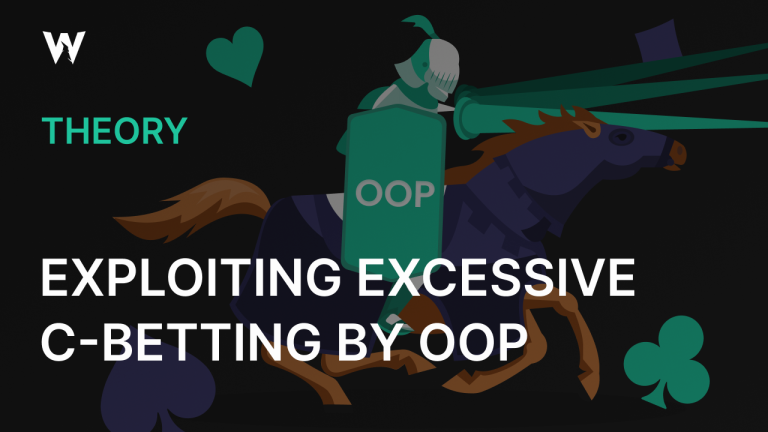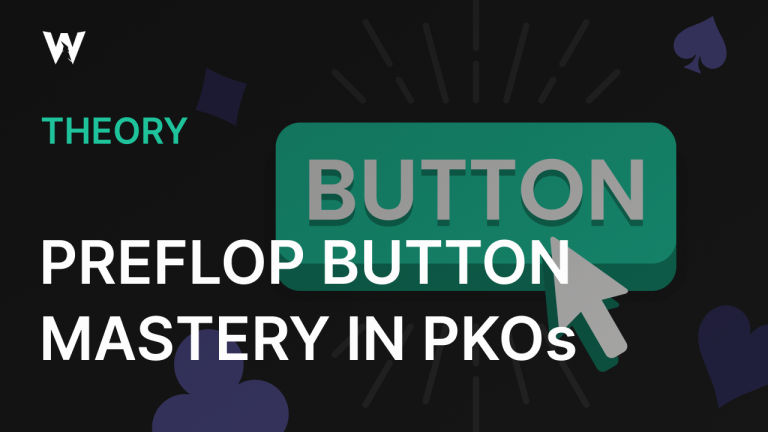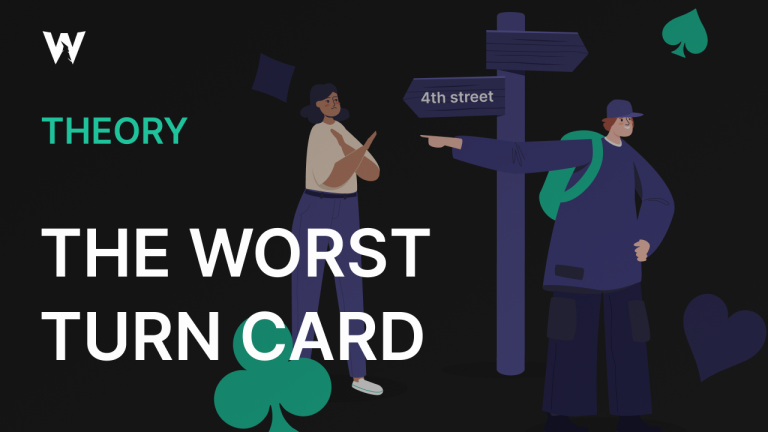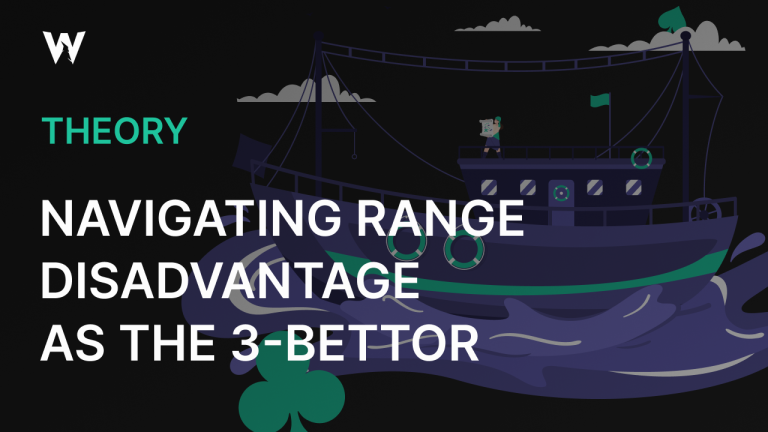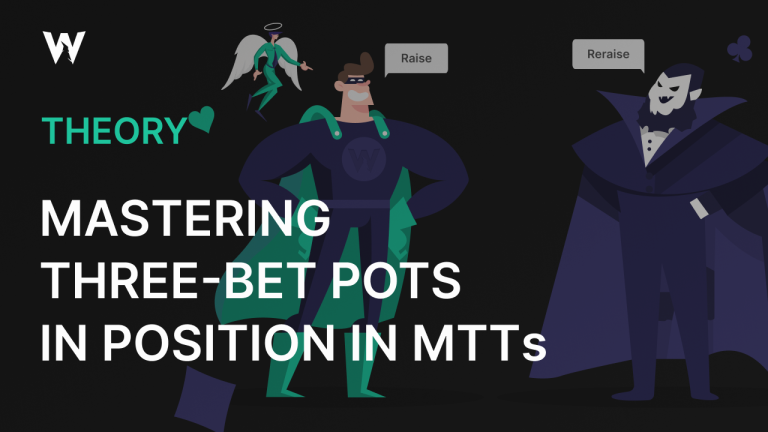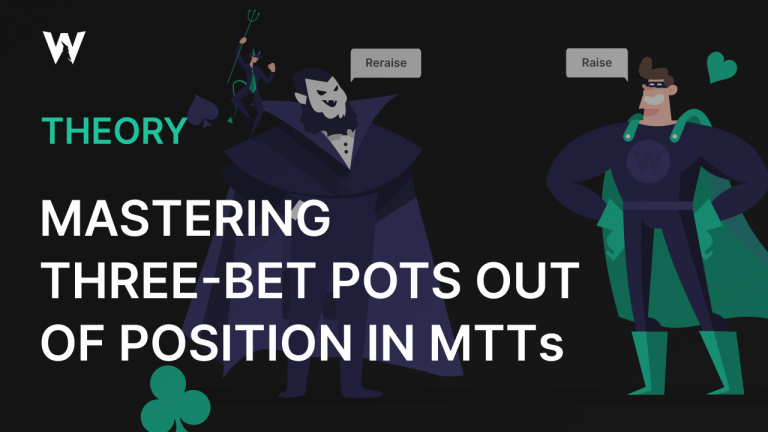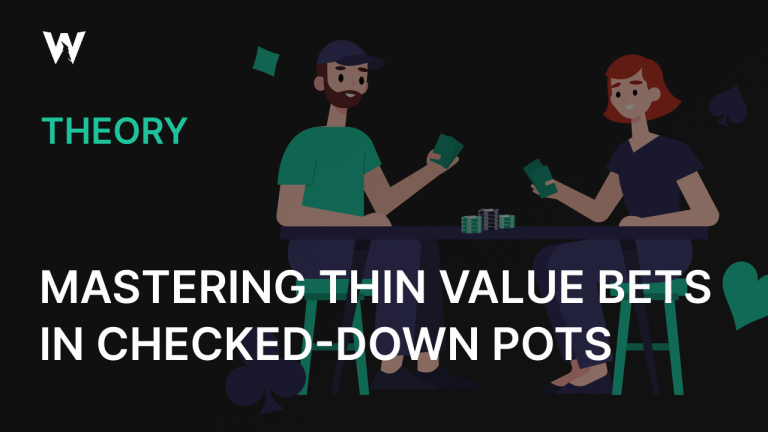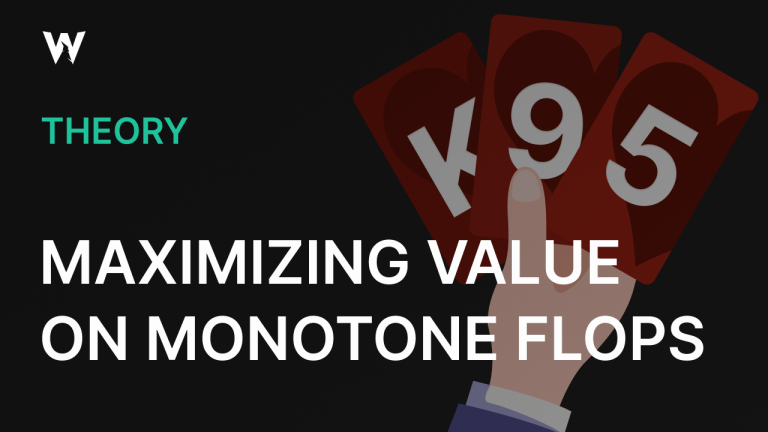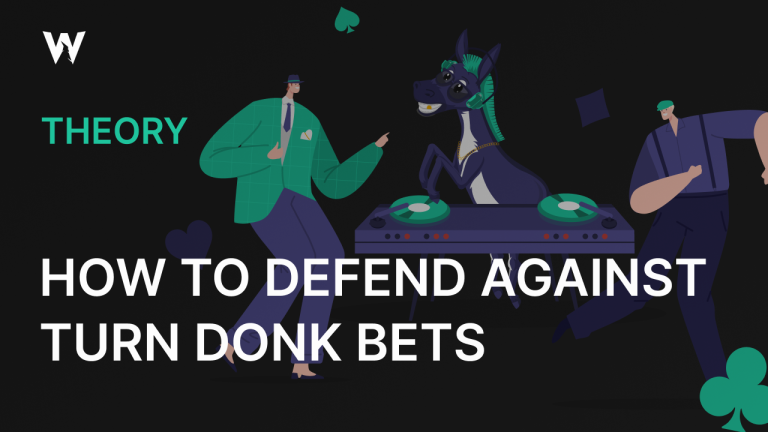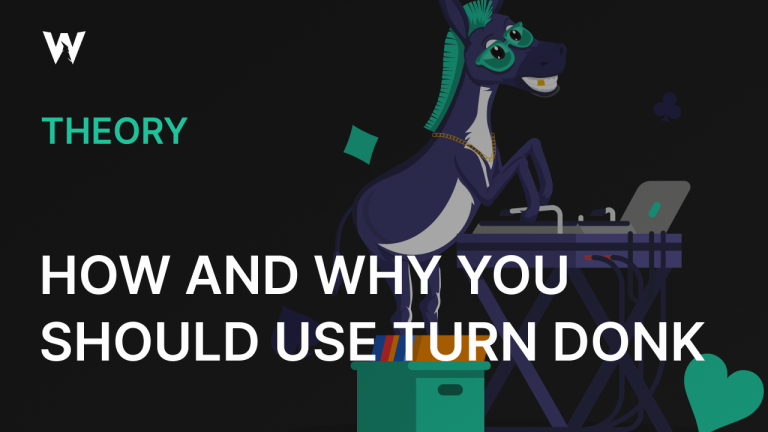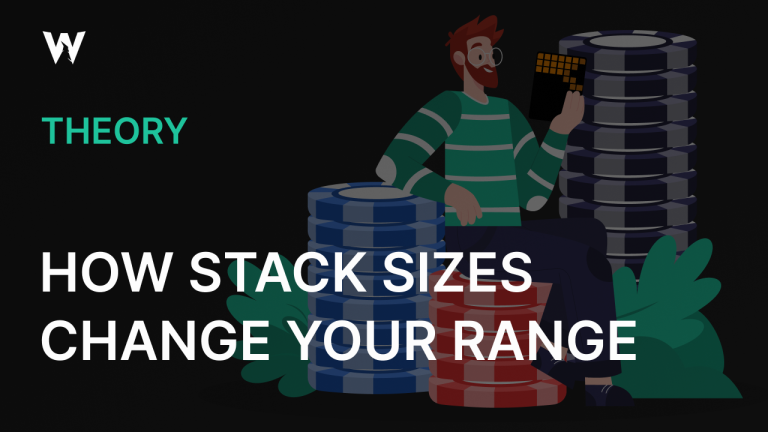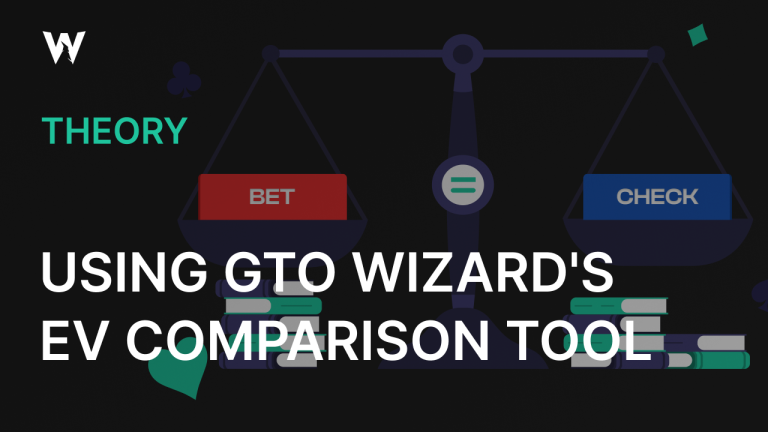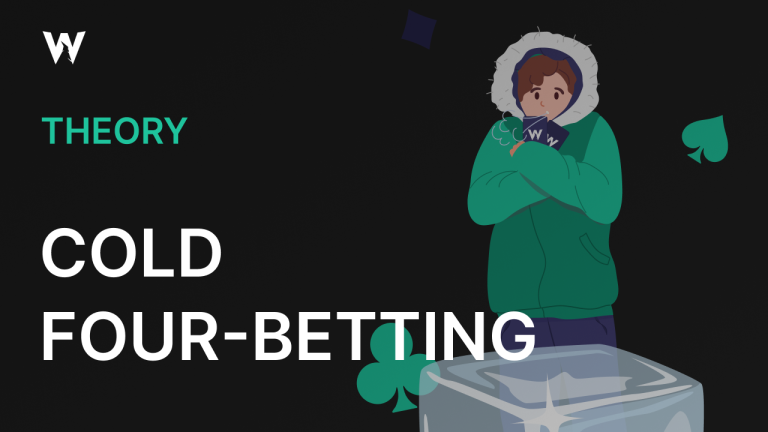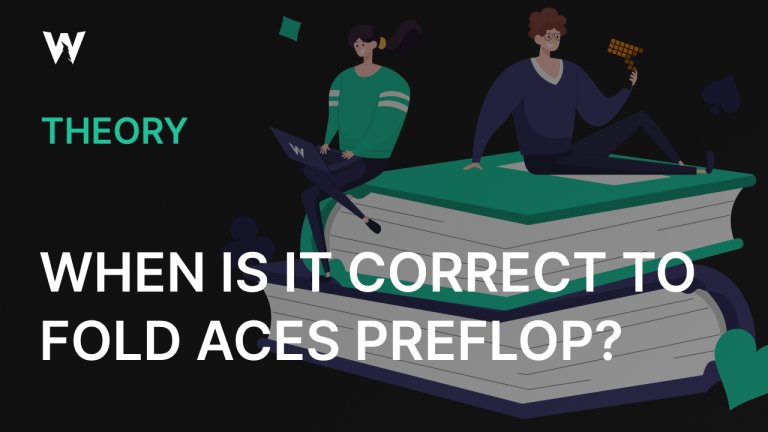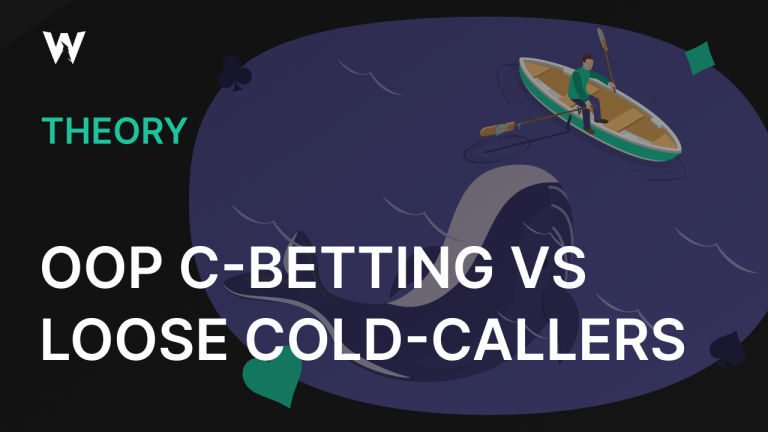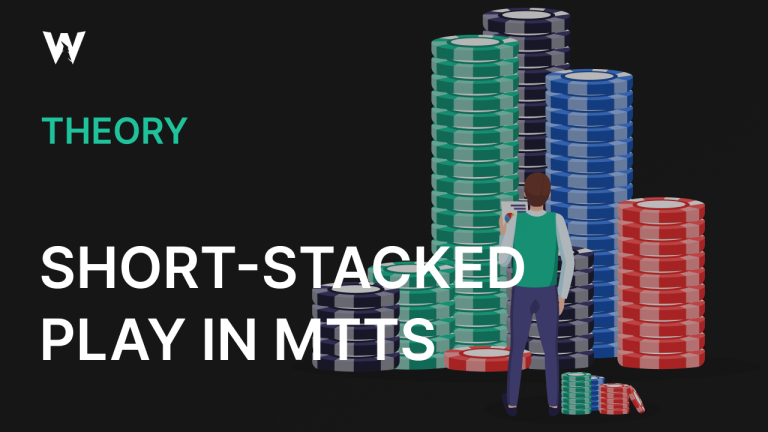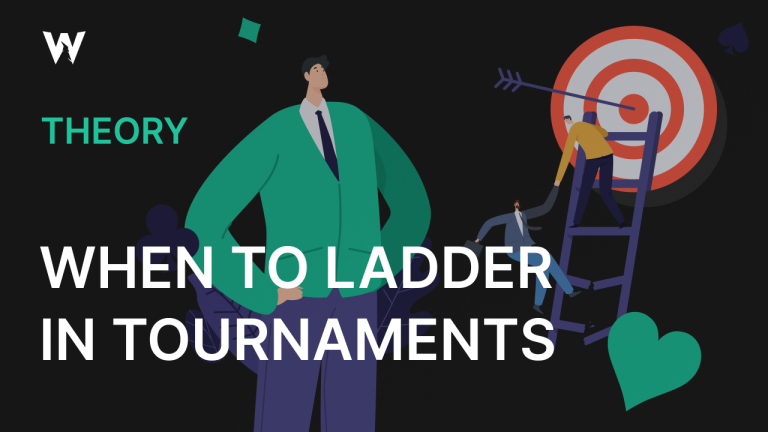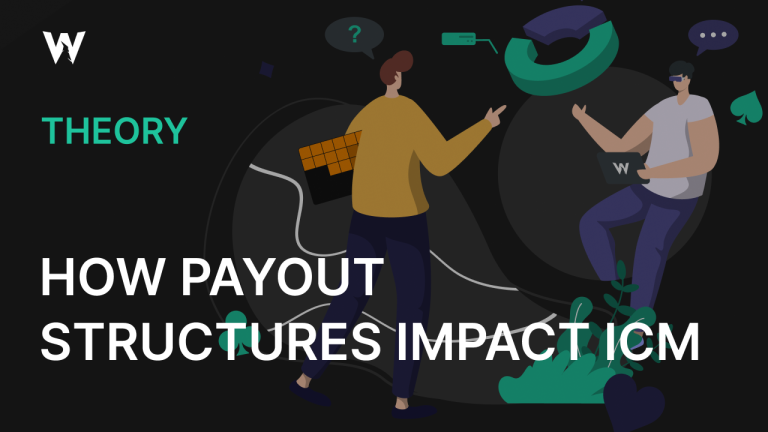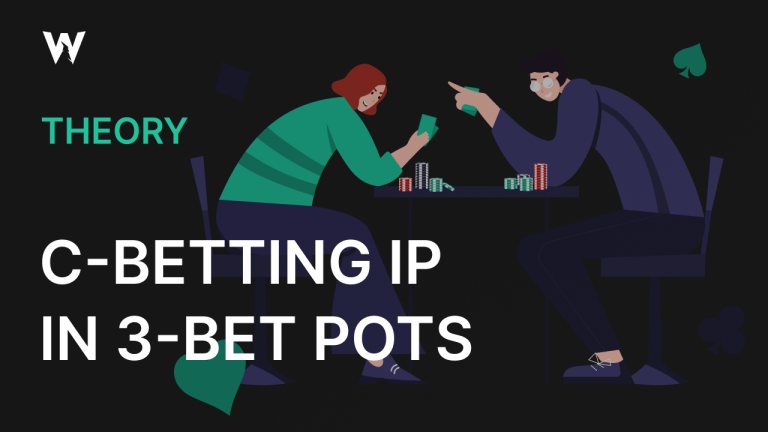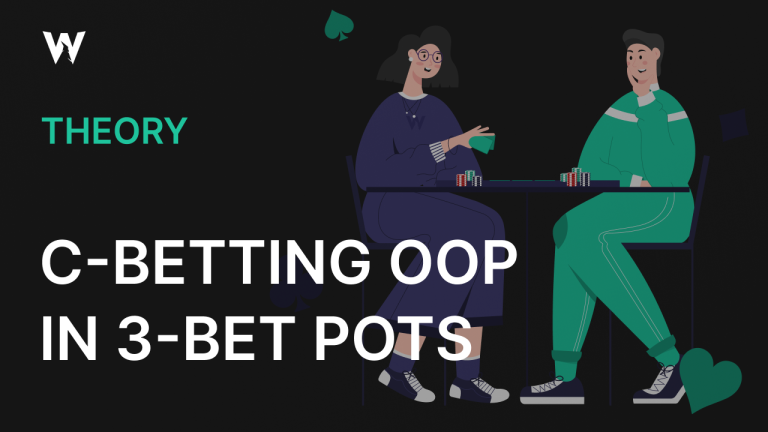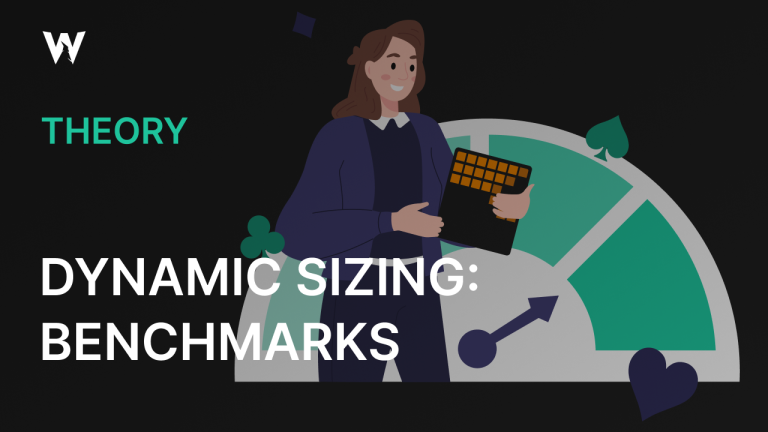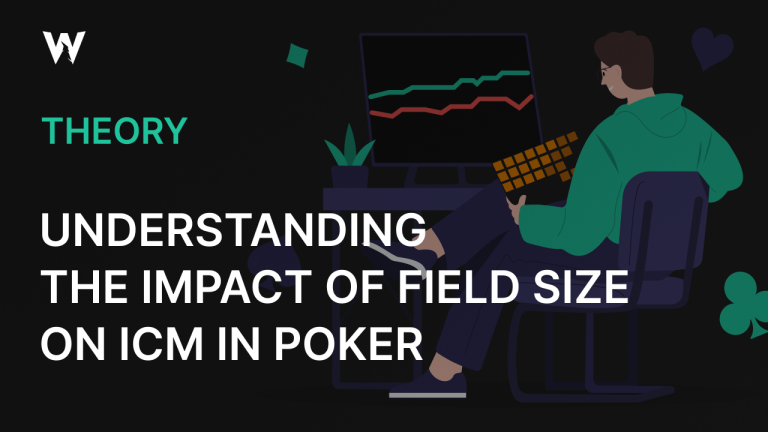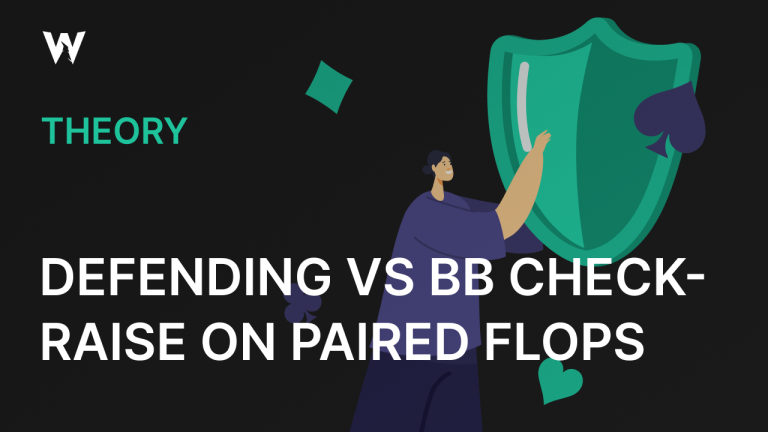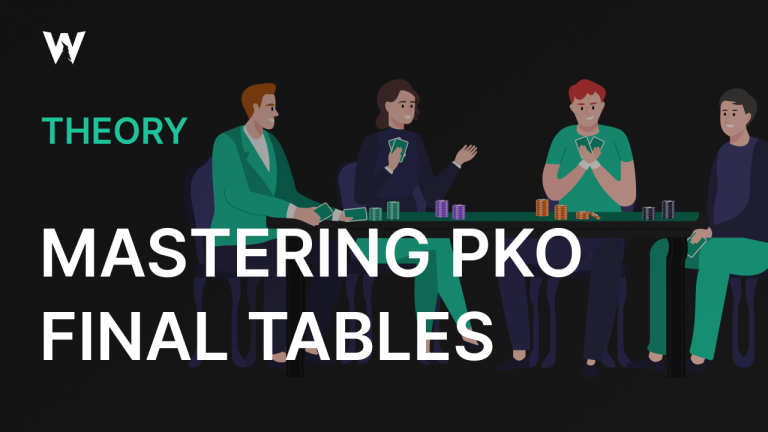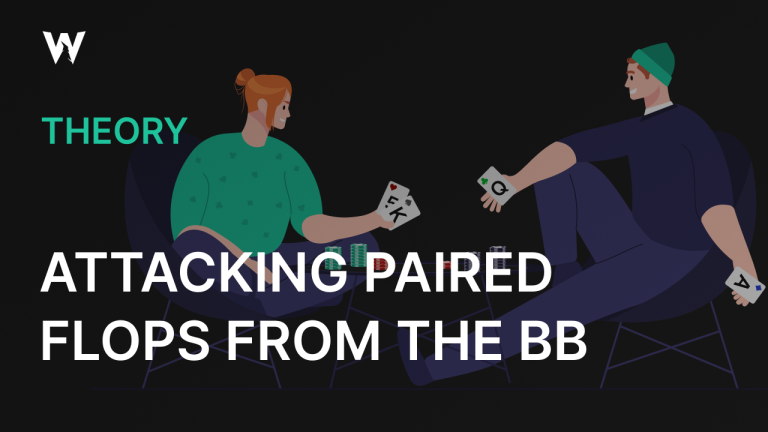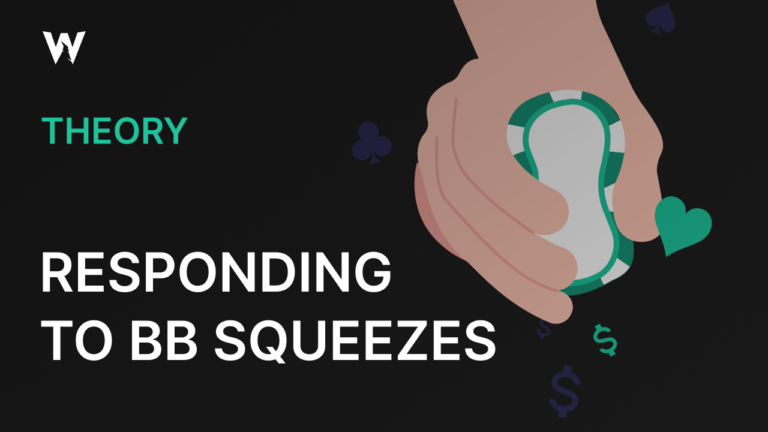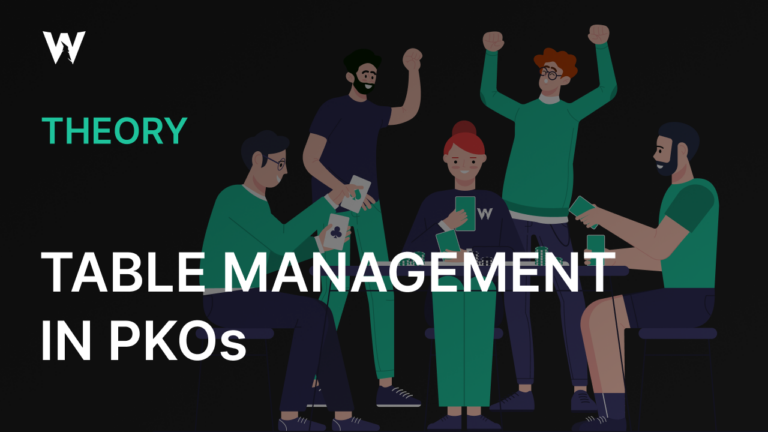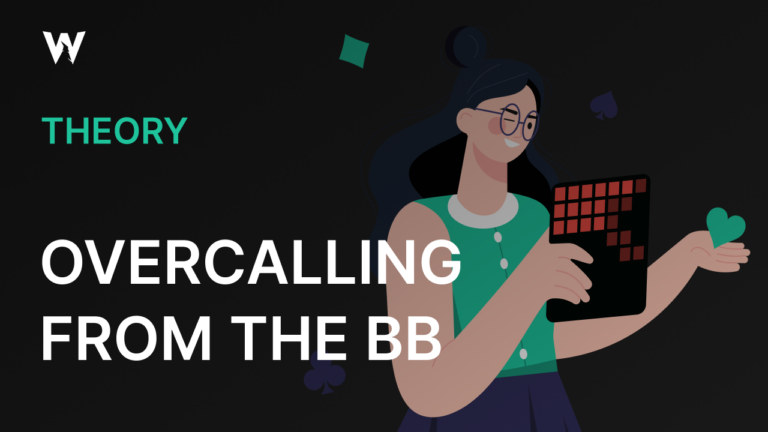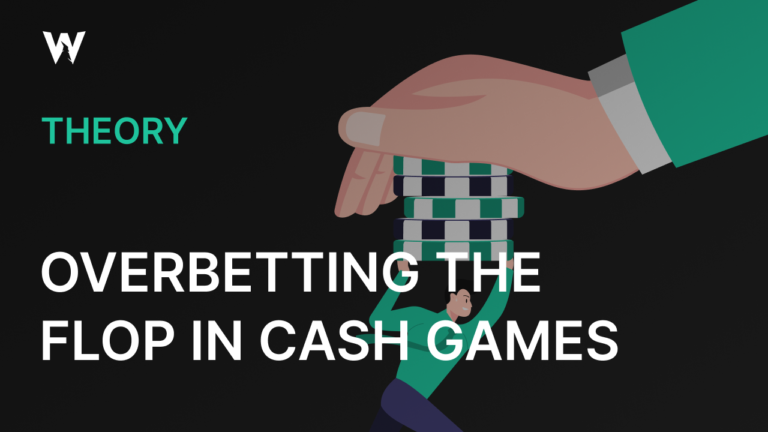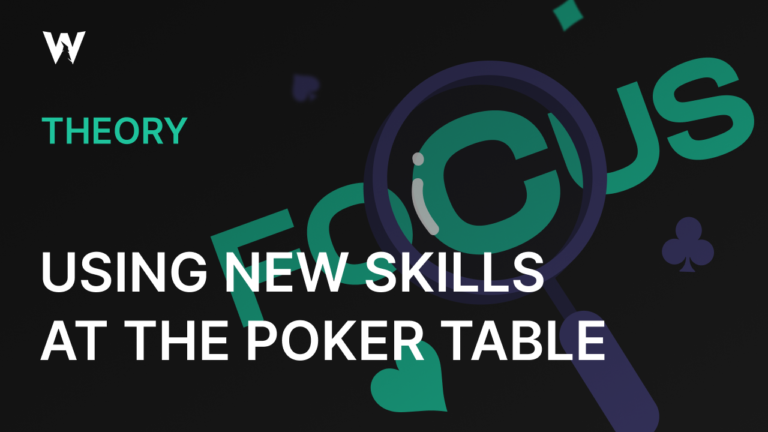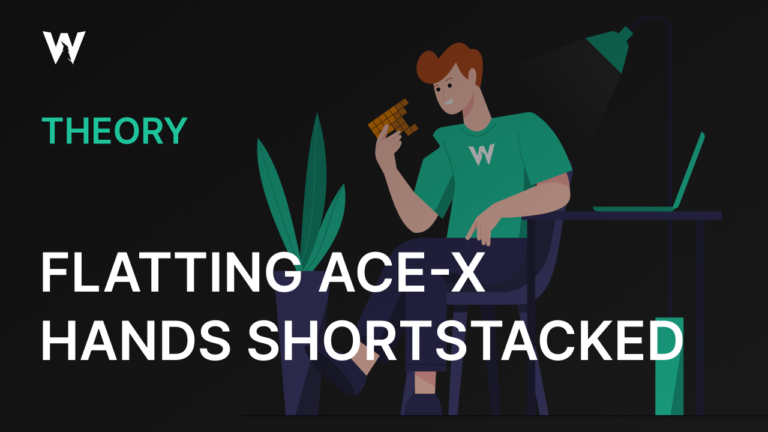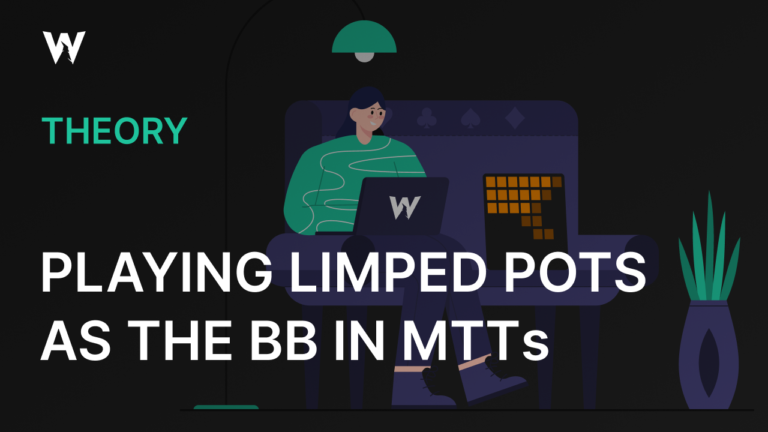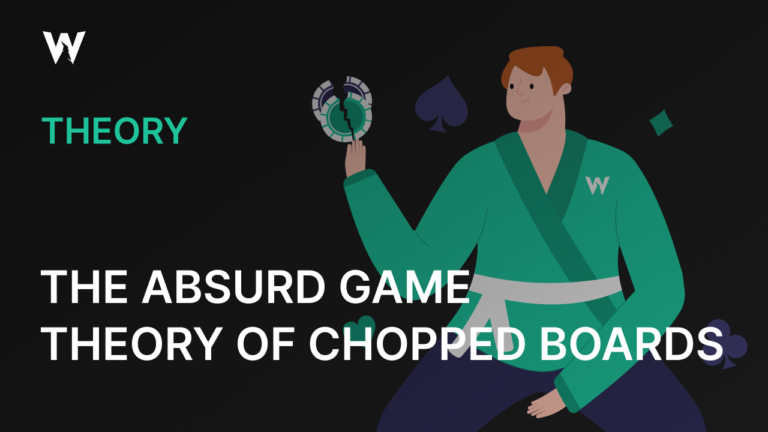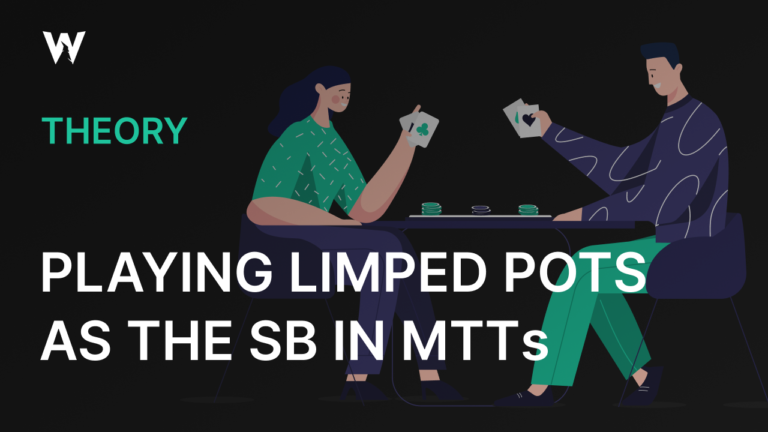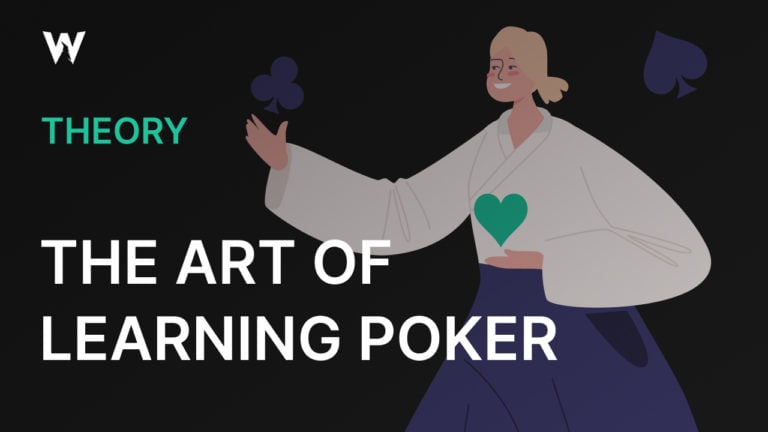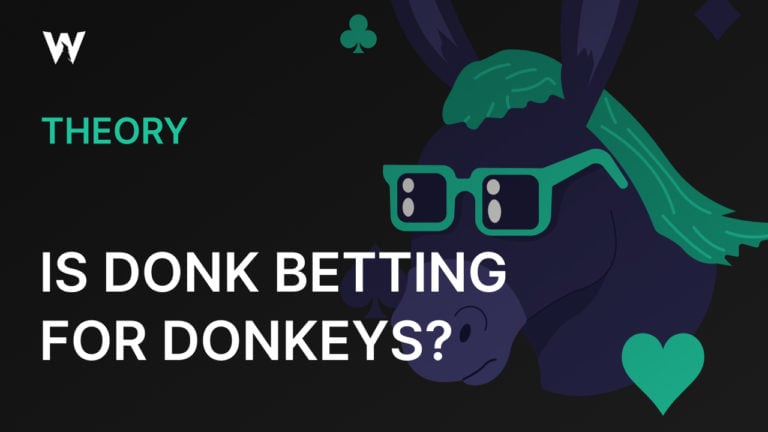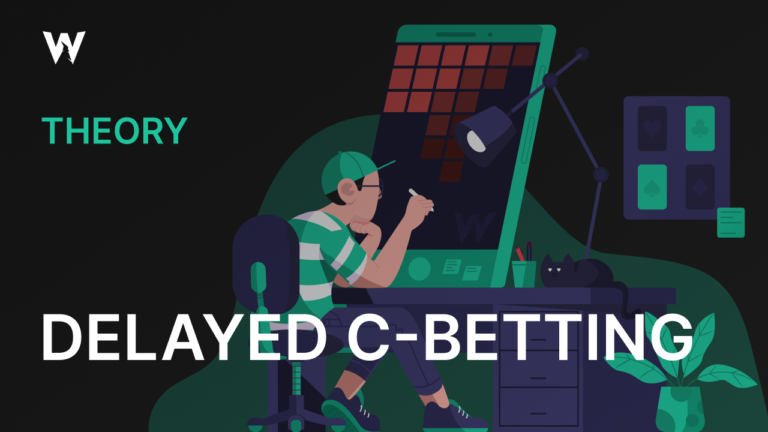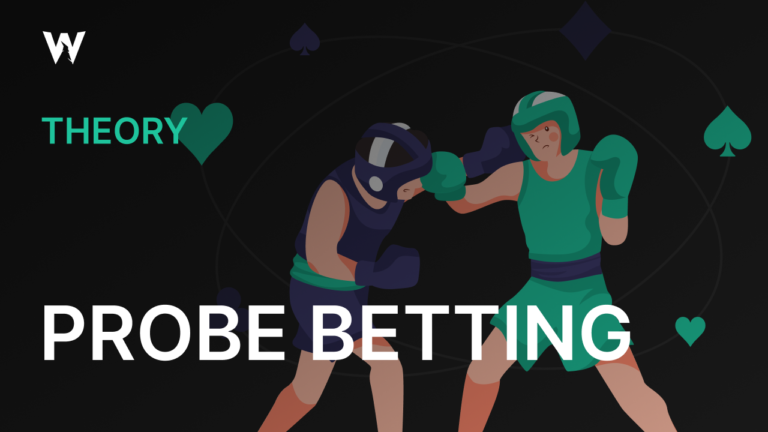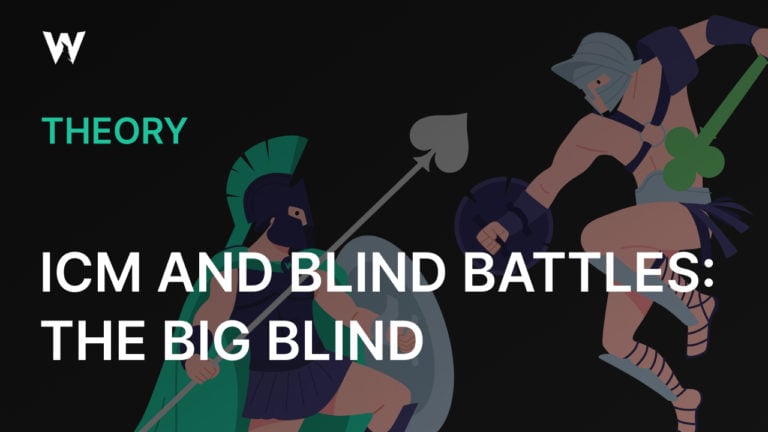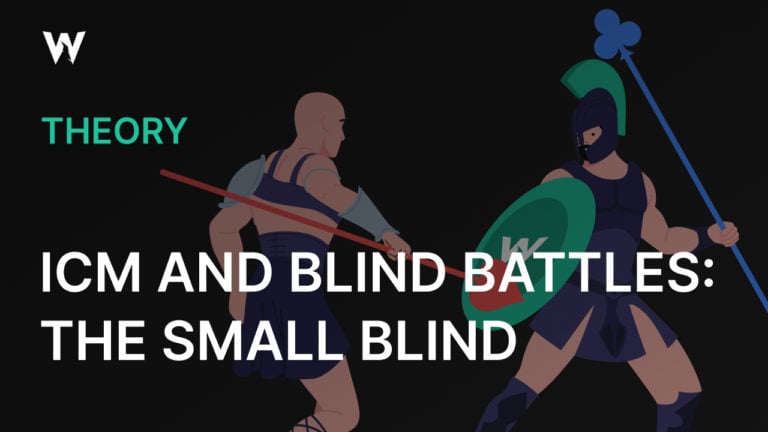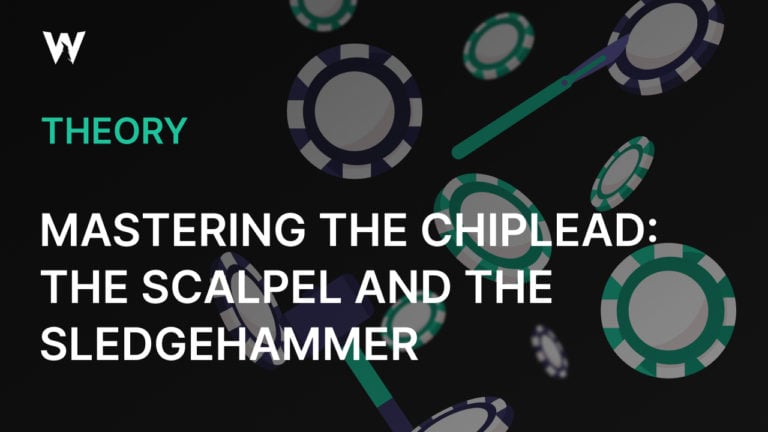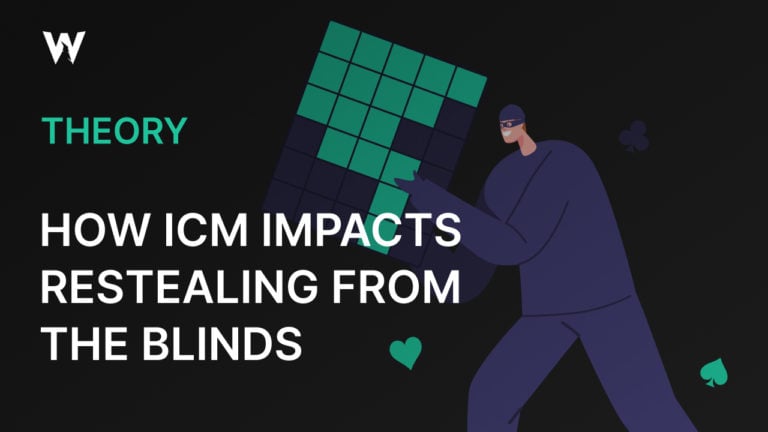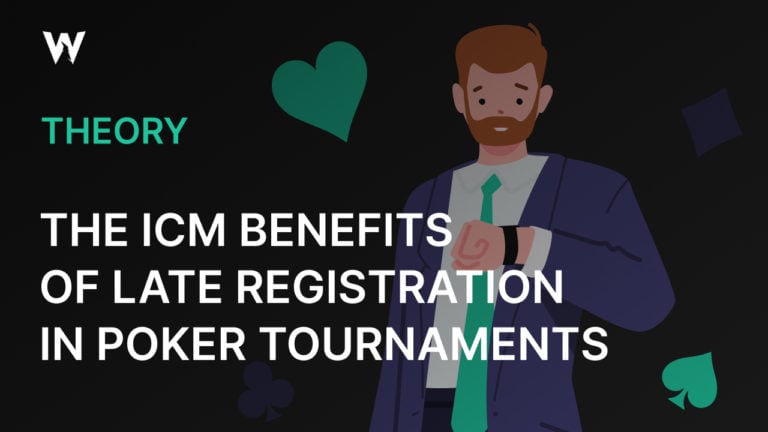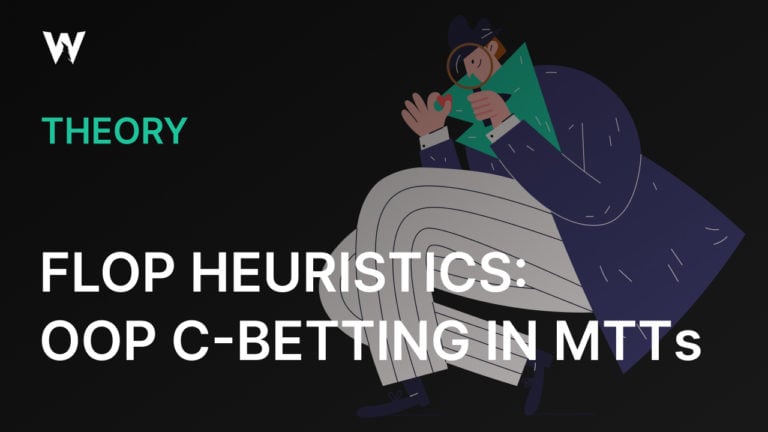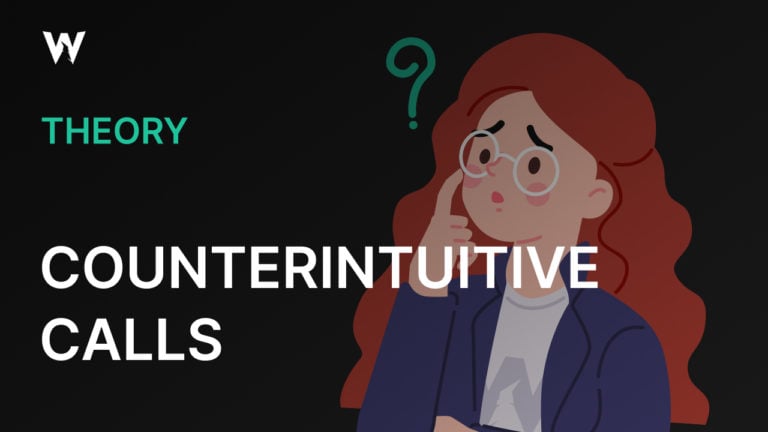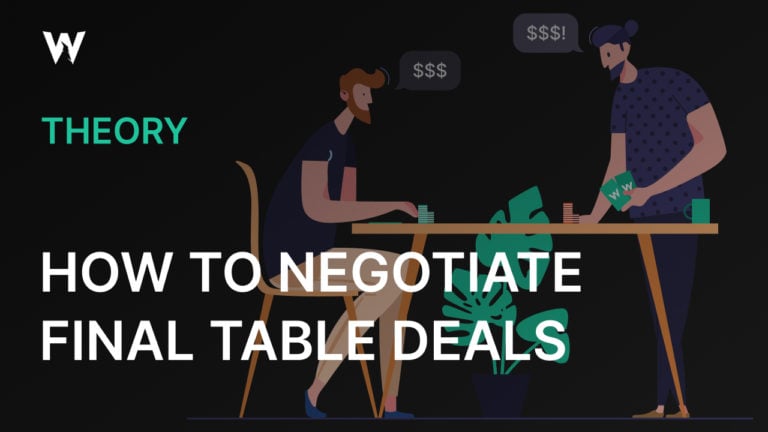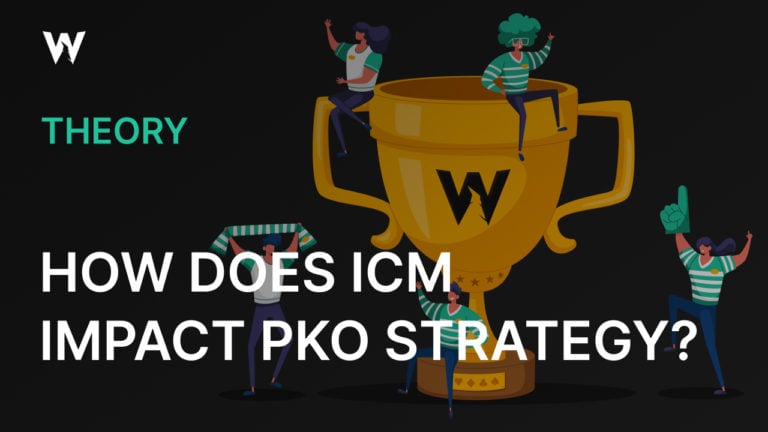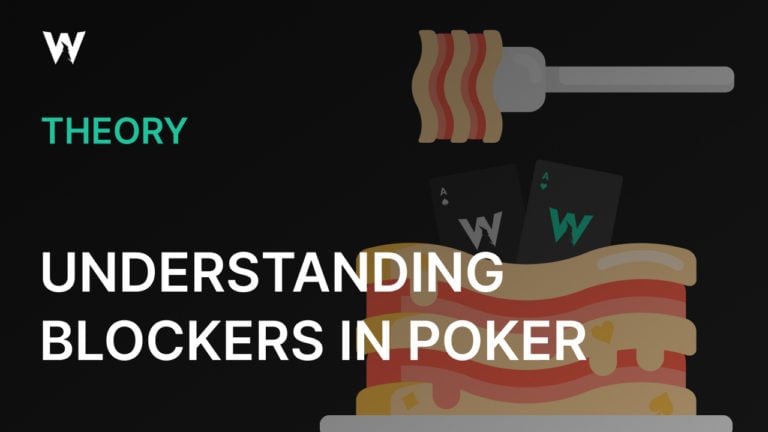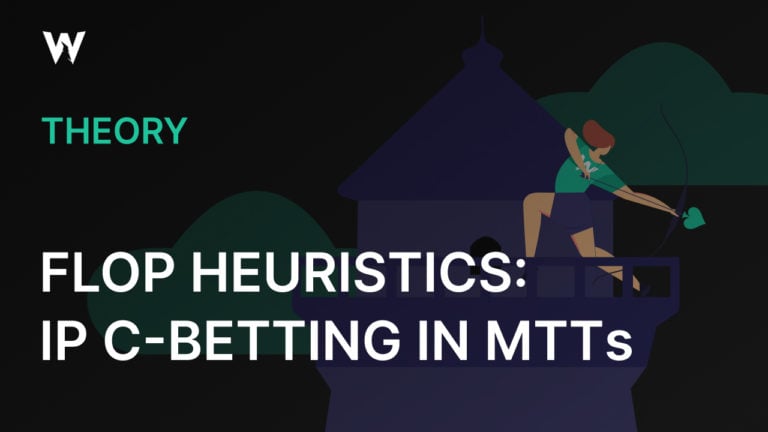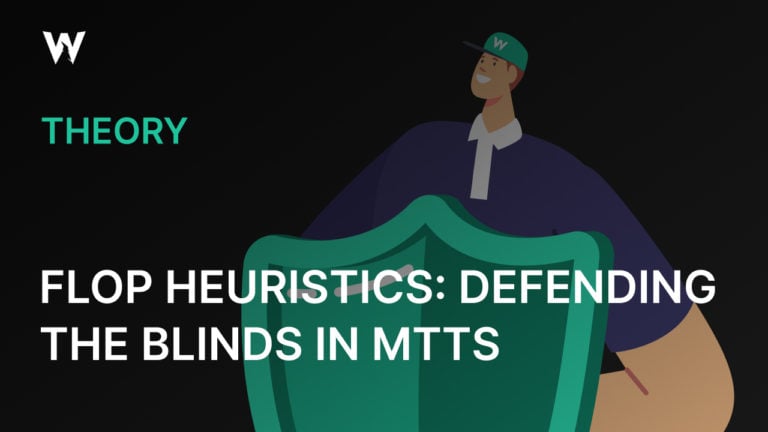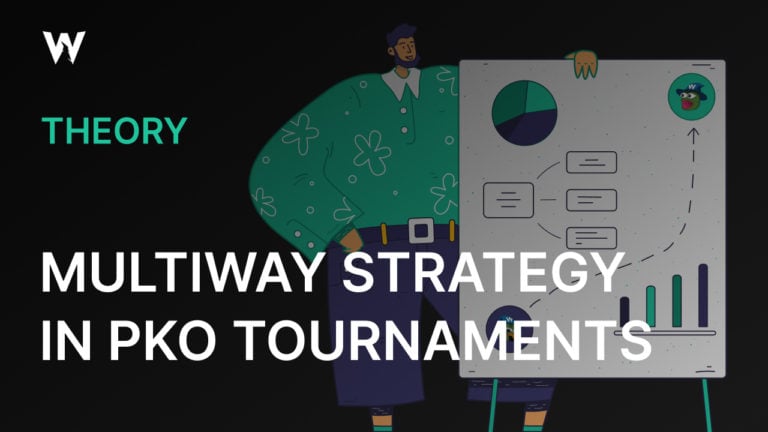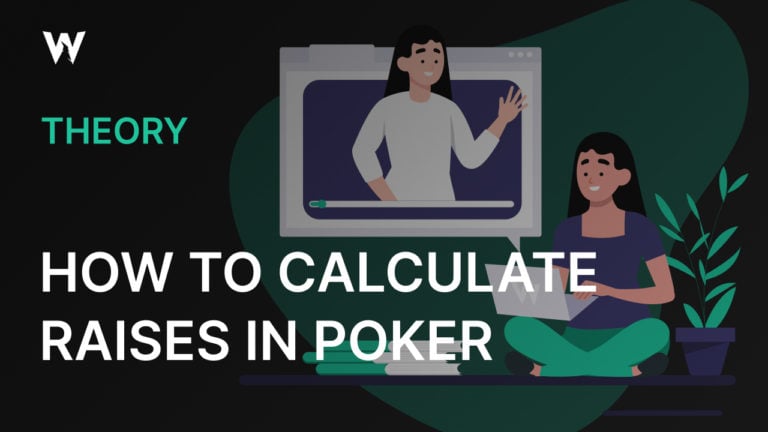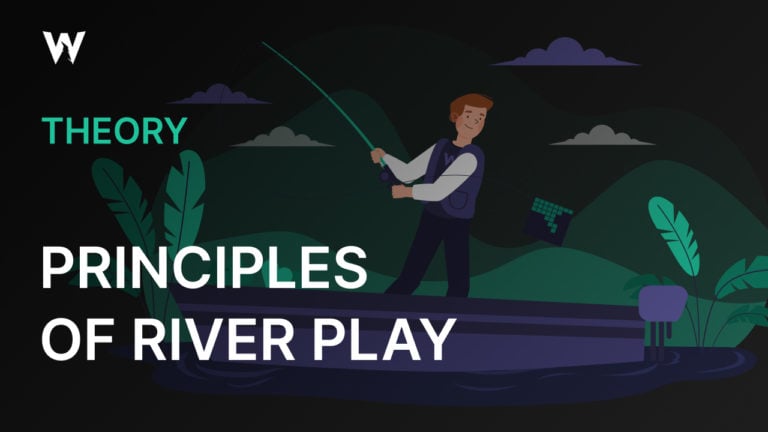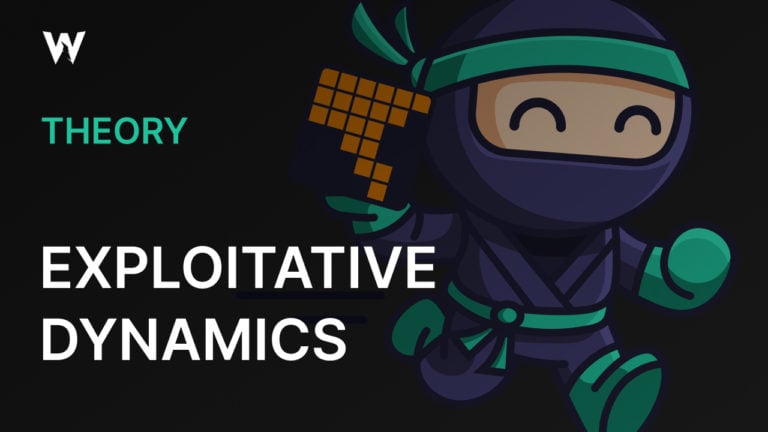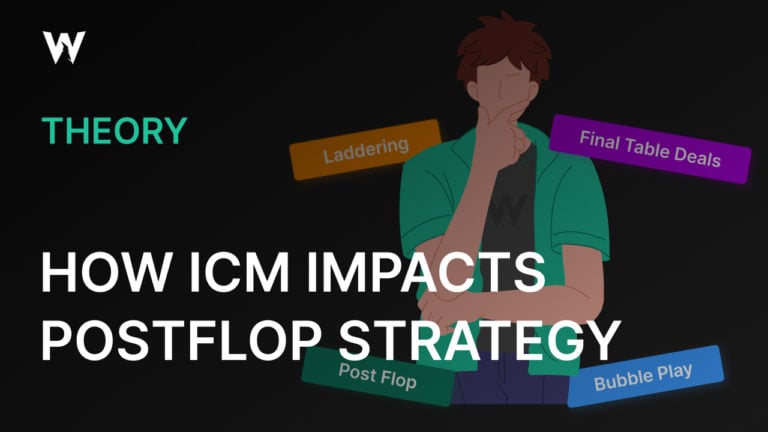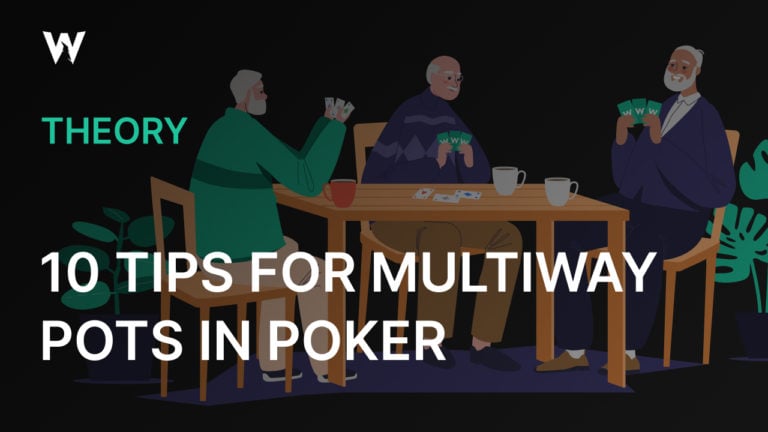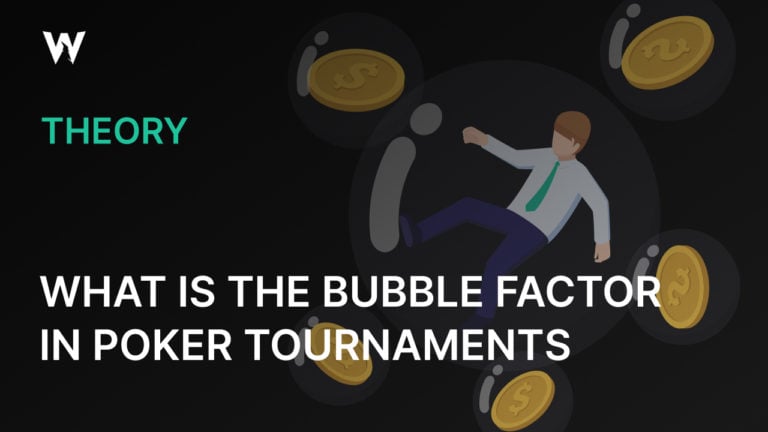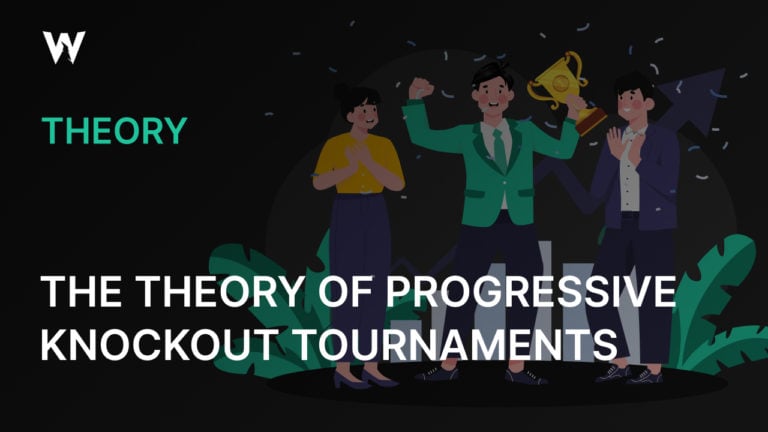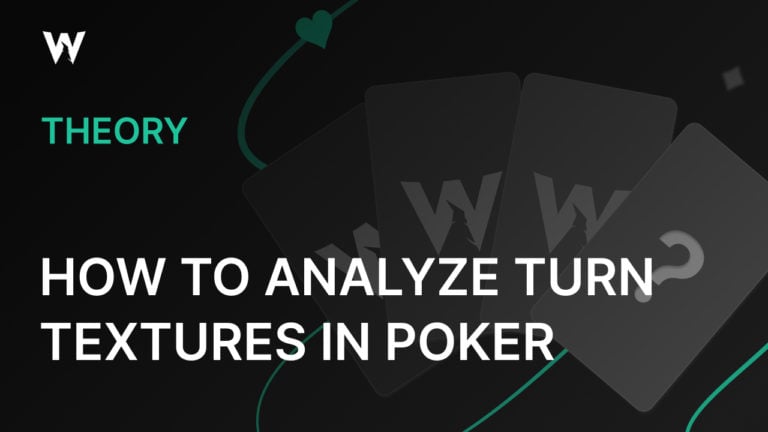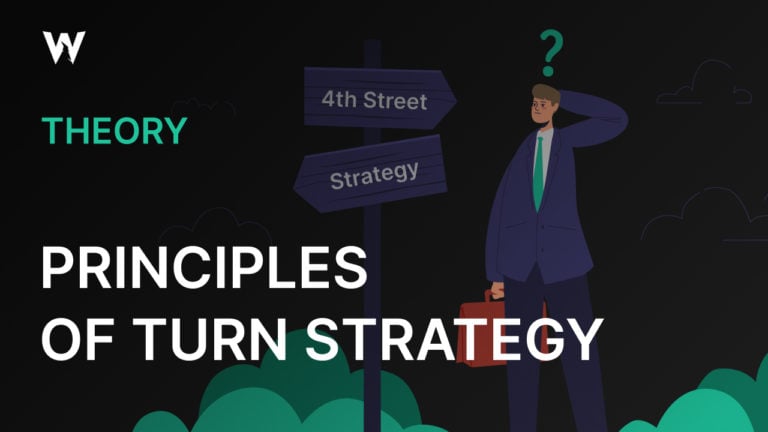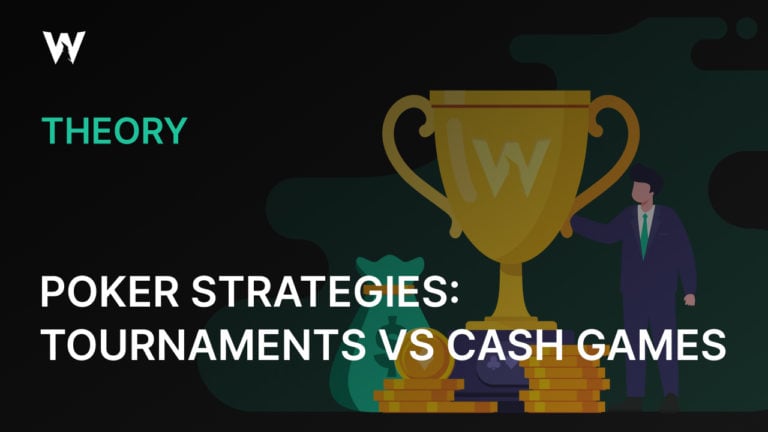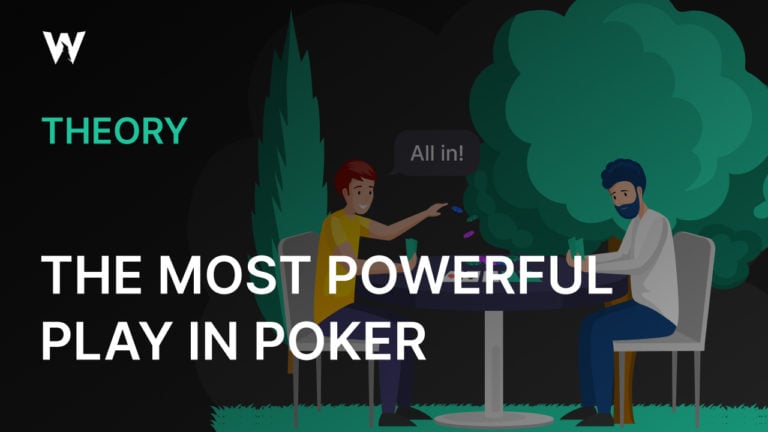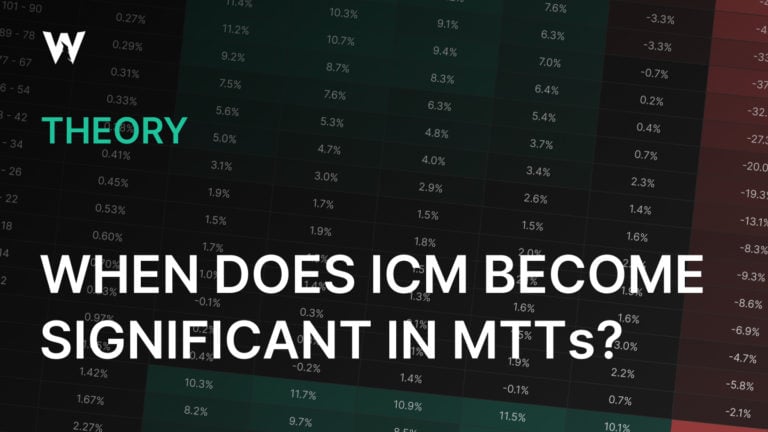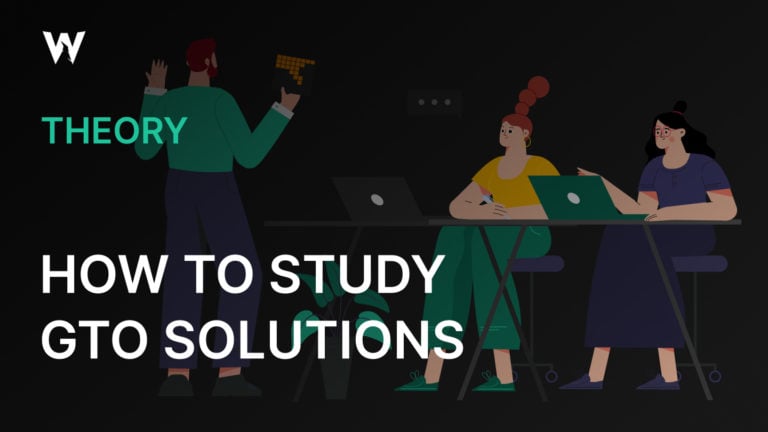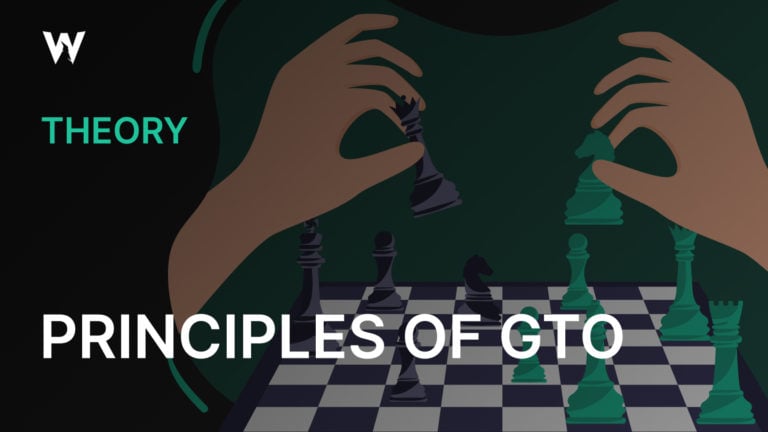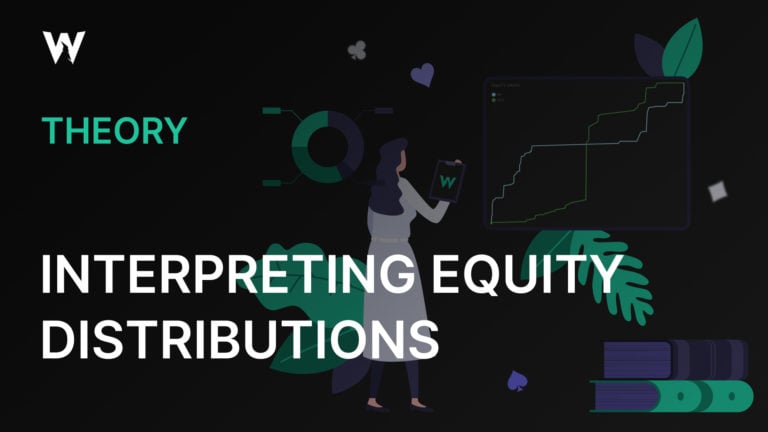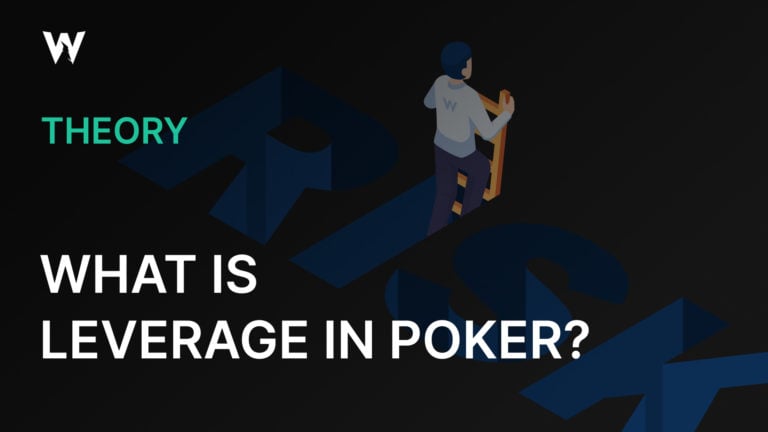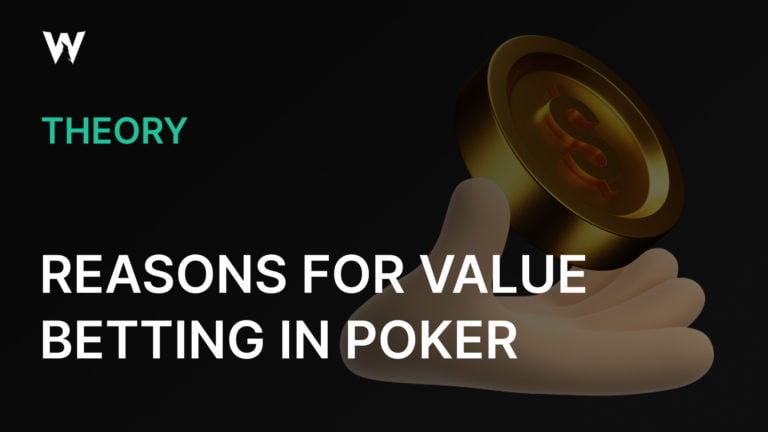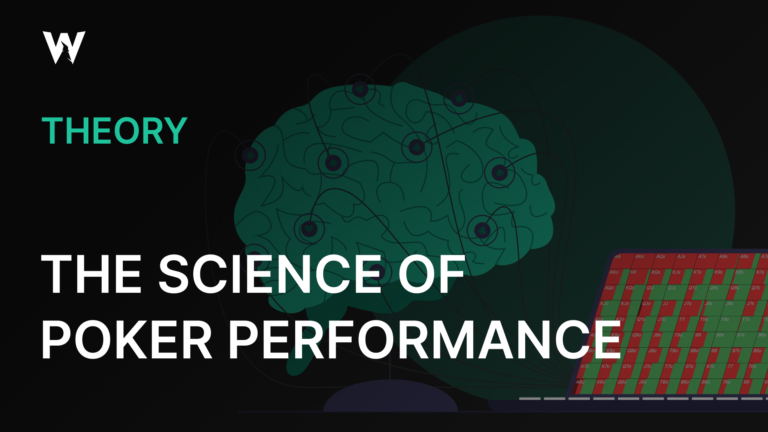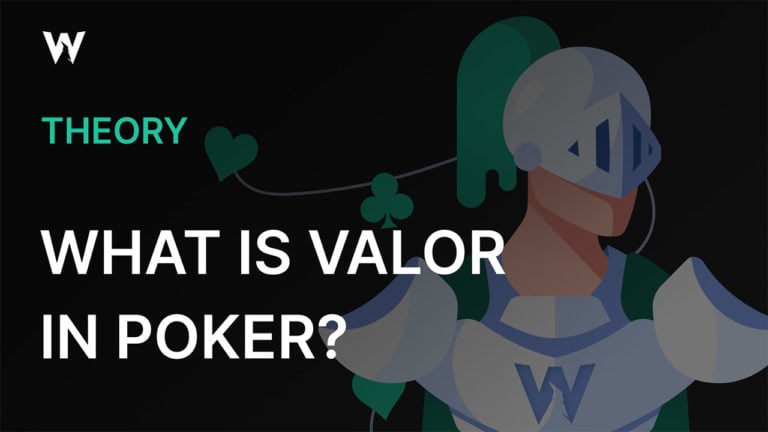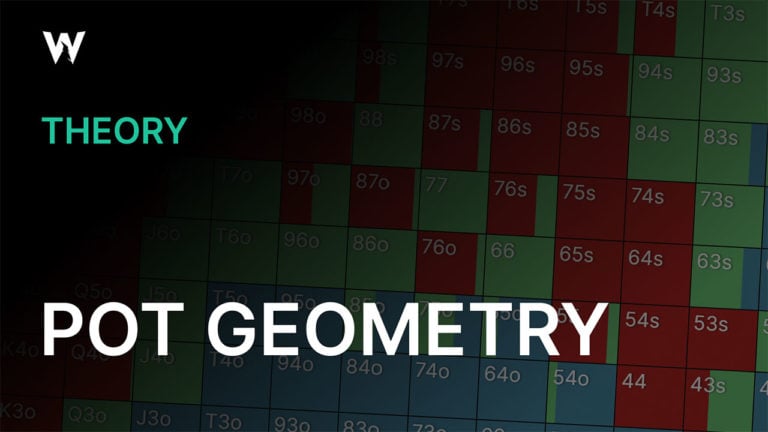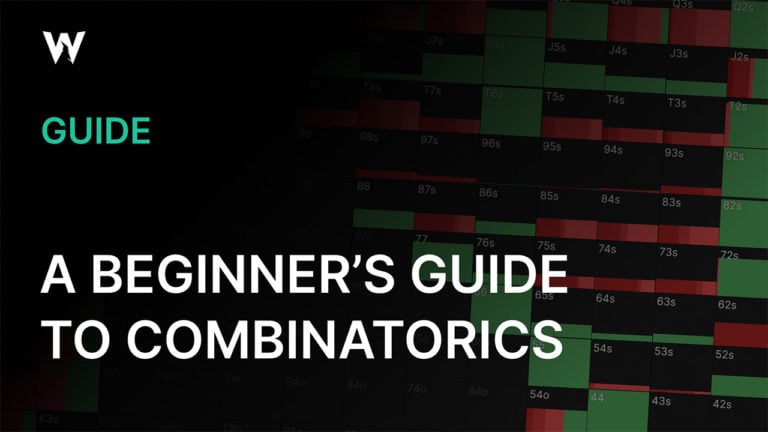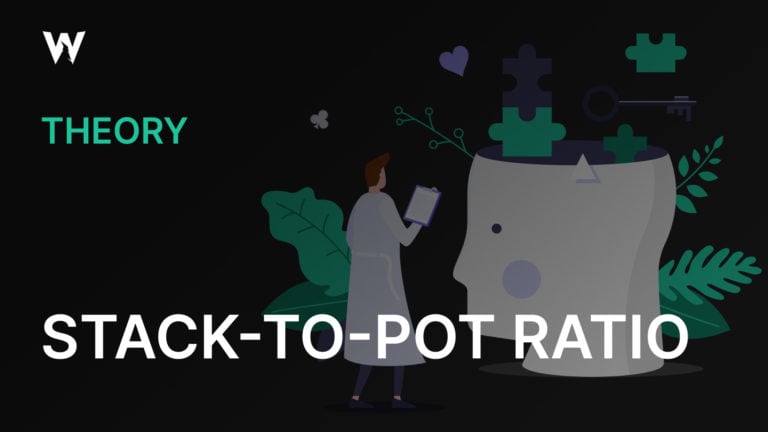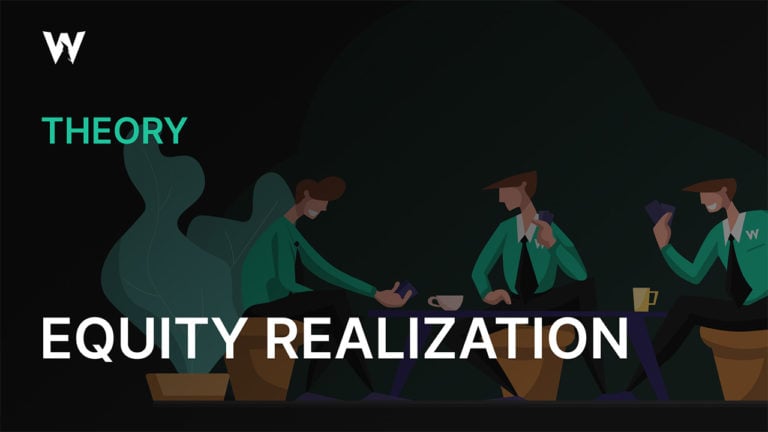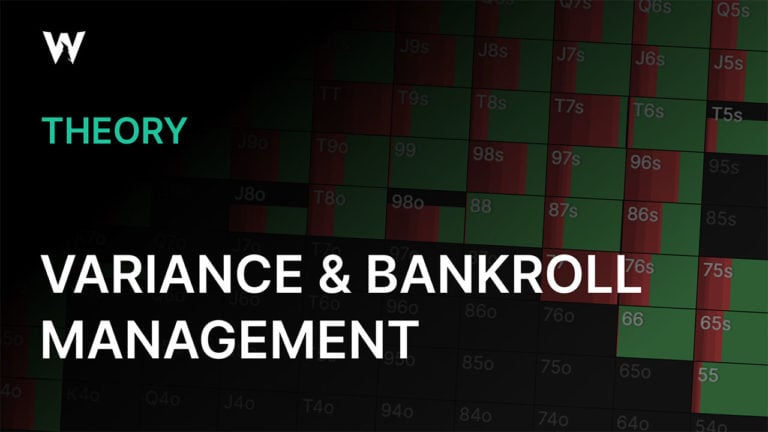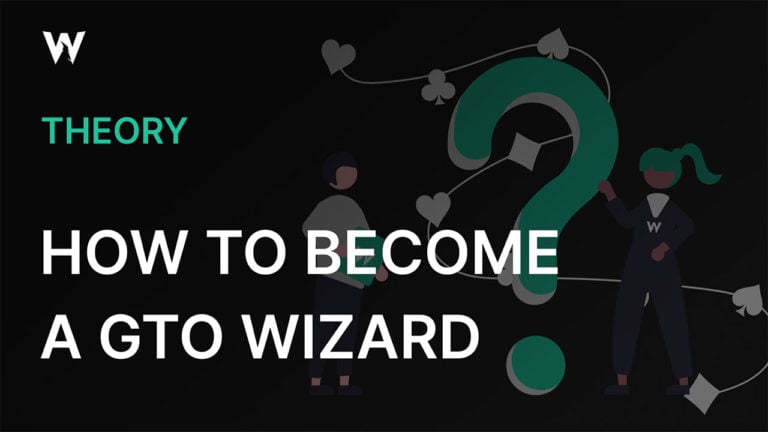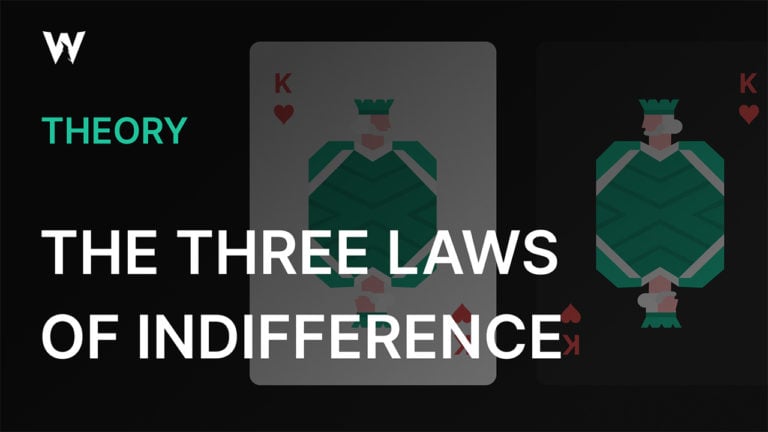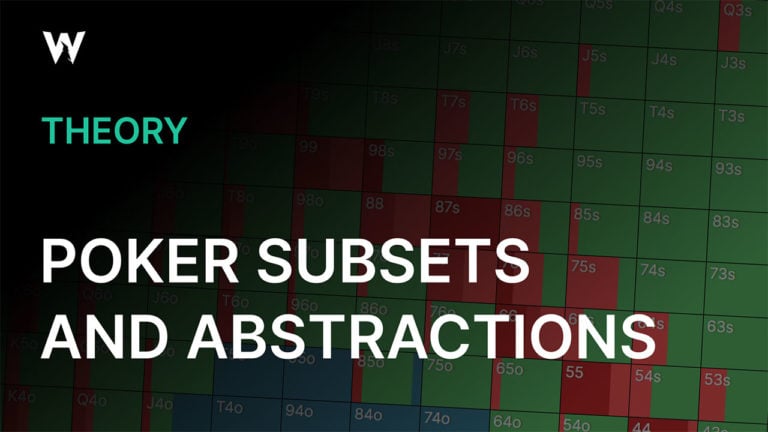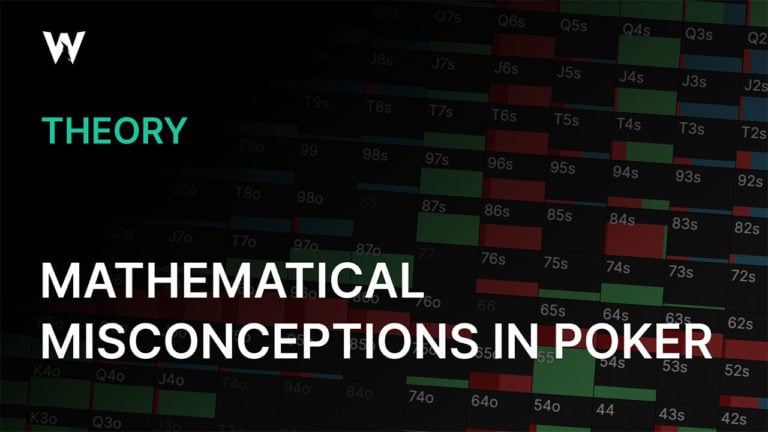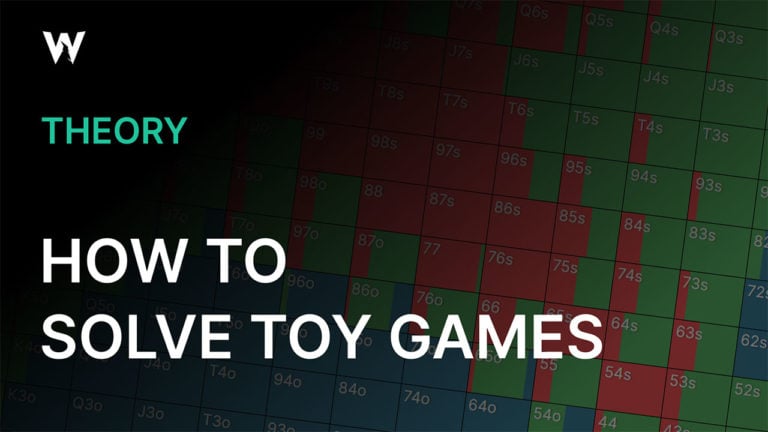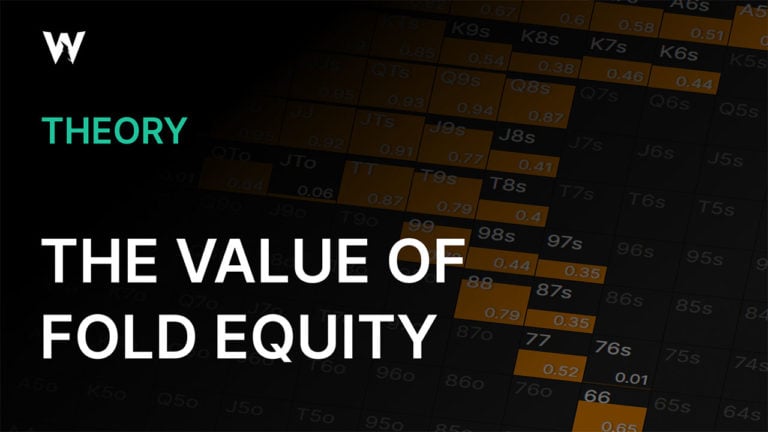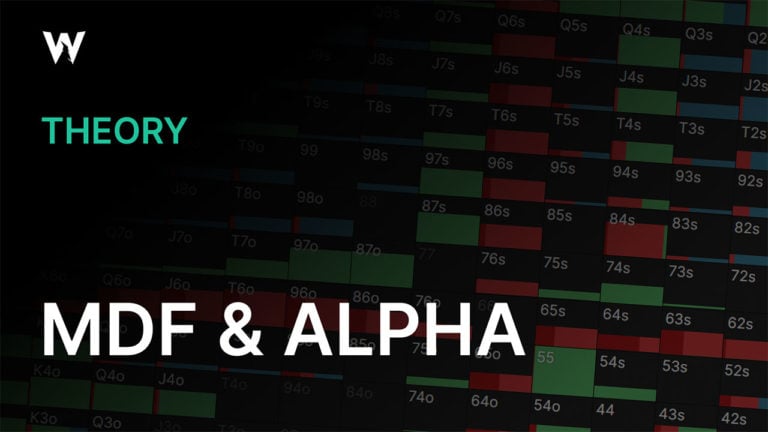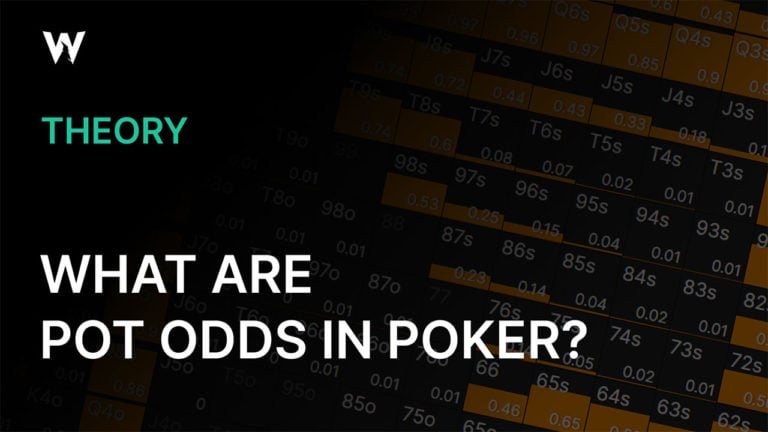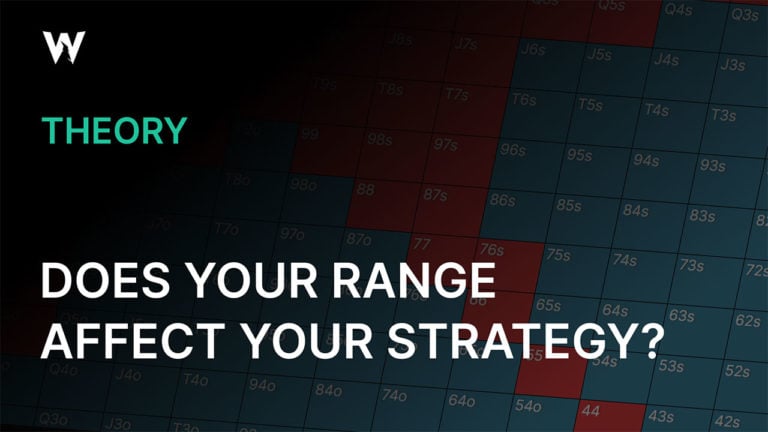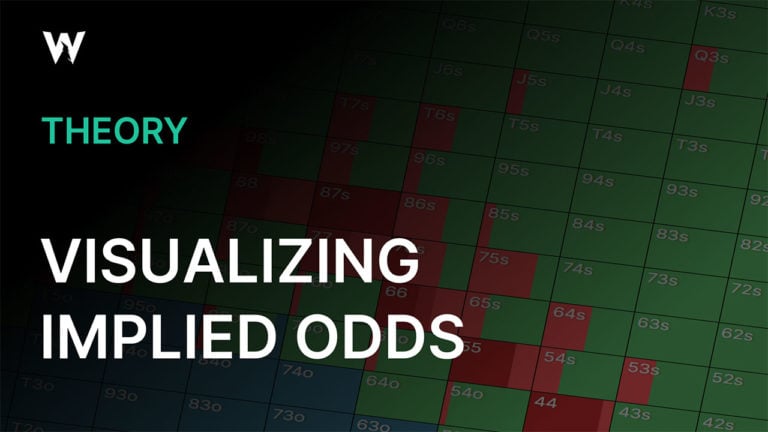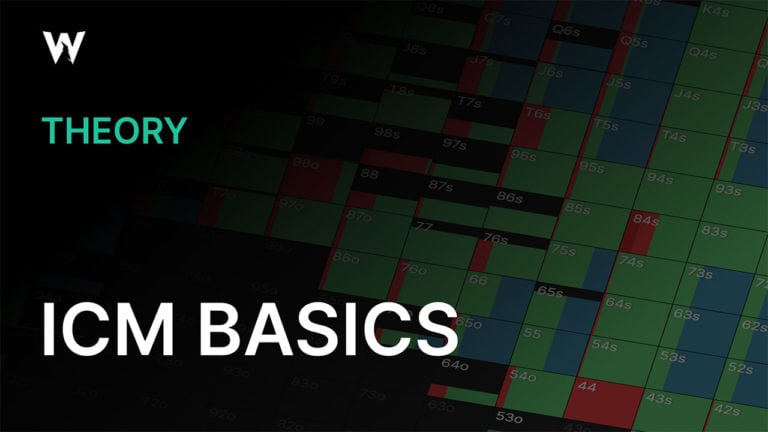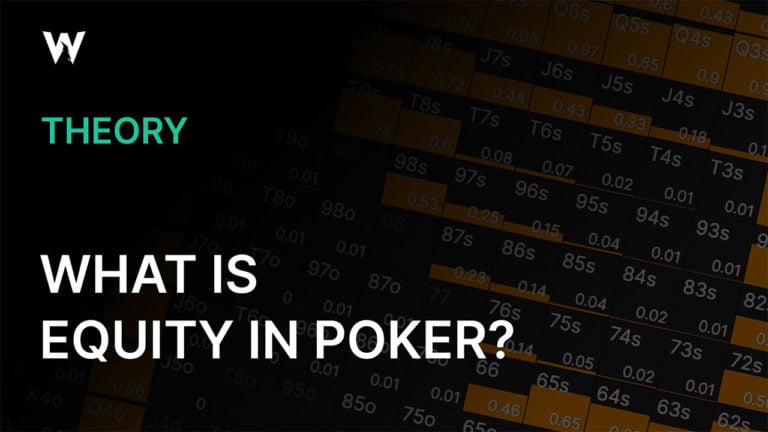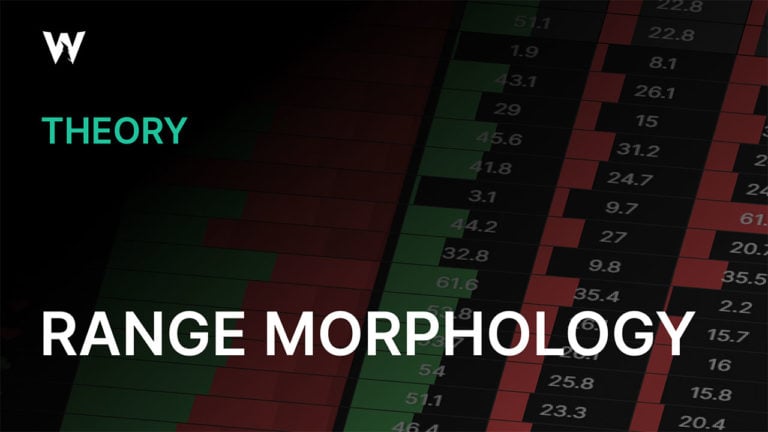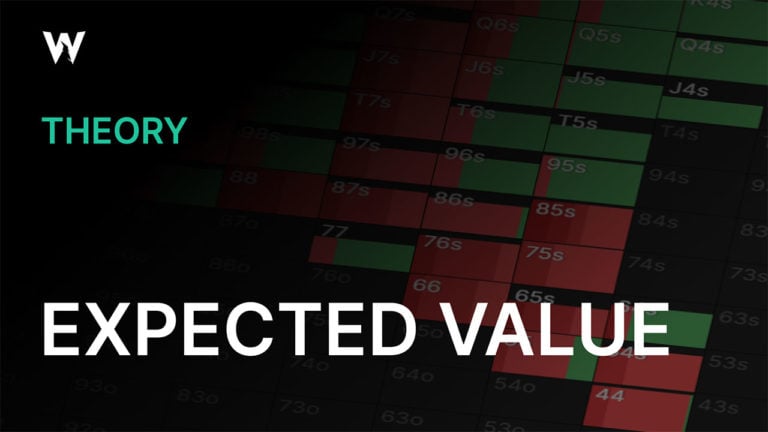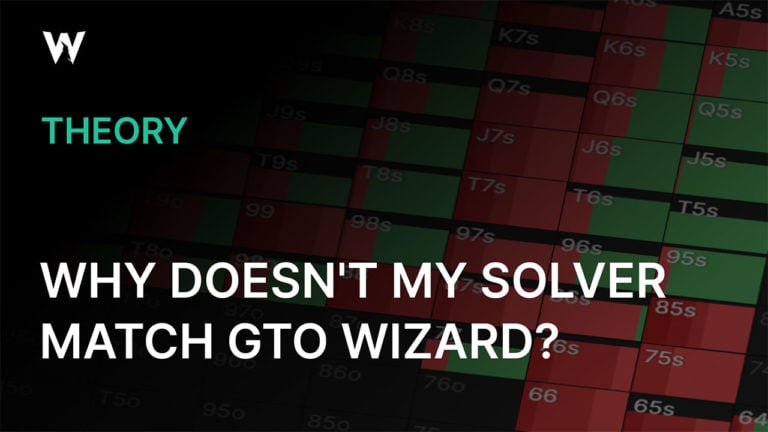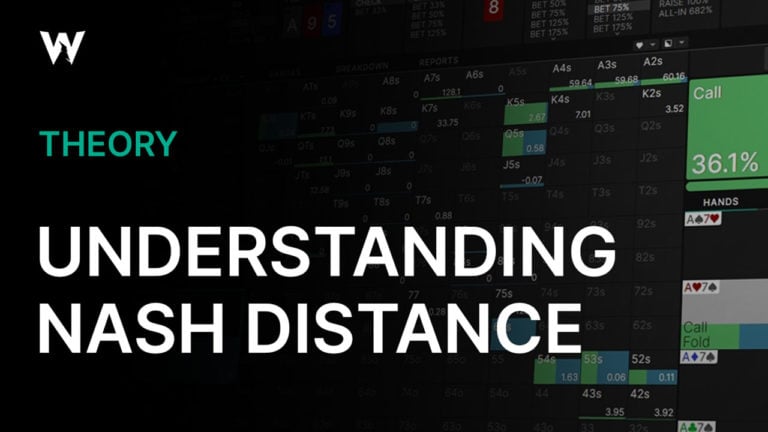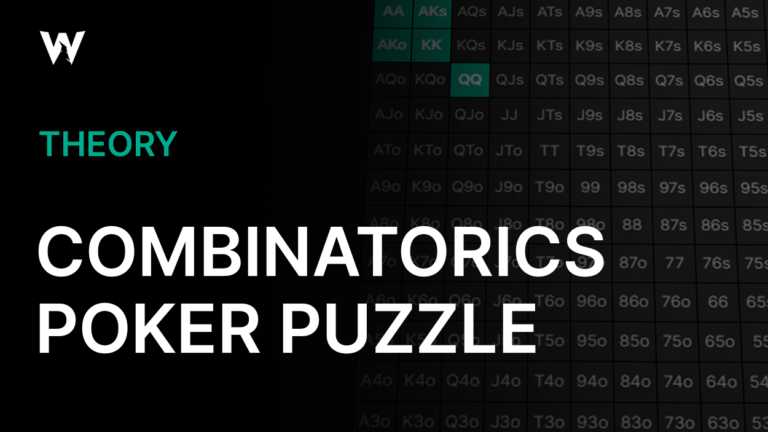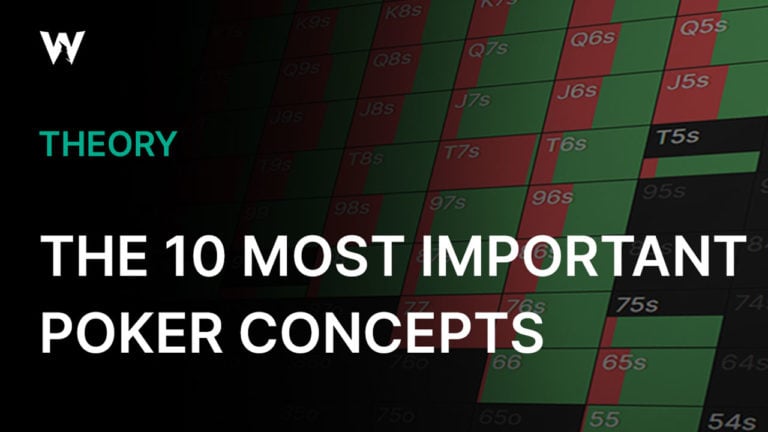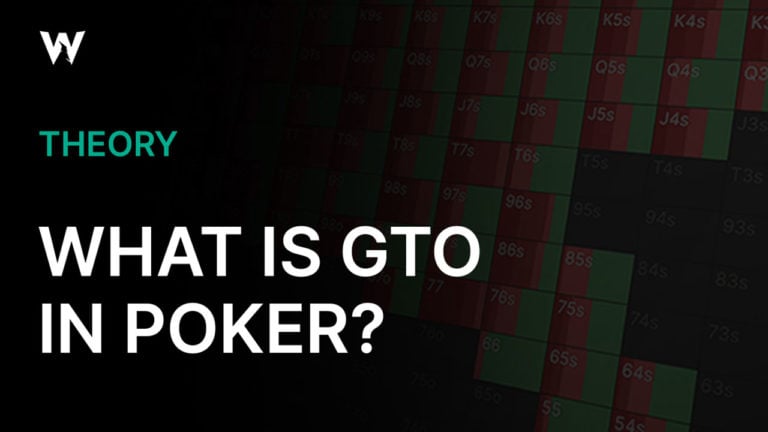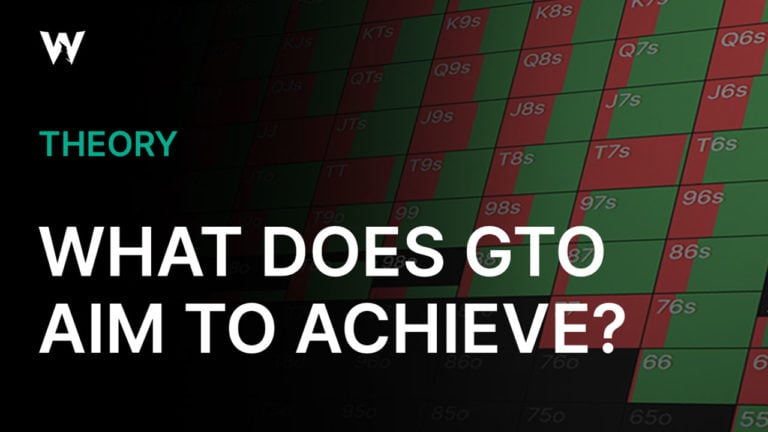The Case for the Hero Check:
Why Great Players Know When Not to Bet
“Hero,” as an adjective, is most commonly applied to calls in poker. Calling a big bet with a weak hand is the riskiest play you can make at the poker table, arguably riskier even than making a big bet with a weak hand. In addition to losing money if you are wrong, you risk looking like a fish. And what is a hero, if not someone who takes big risks to do what they believe is right?
Unfortunately, the positive connotations of “heroism” make hero calling sound more important than it really is. Calling with a low-ranked hand may be riskier than folding or value betting or checking such a hand, but it is not intrinsically more valuable. In fact, it is often less valuable than the less sexy plays that are the bread and butter of successful poker players.
Excellent checks and folds emphasize discipline, close attention, and precision over bravado. They aren’t flashy—sometimes they even feel bad—but they are essential to high-level play.
Hero calls get a disproportionate amount of attention because they are accompanied by big pots. When the call works out, you get a double dopamine hit:
- One from playing well (or at least believing you played well; the fact that your opponent was bluffing this time is not definitive proof that your call was +EV), and
- Another one from winning a big pot.
That second hit can easily dwarf the first, which is a problem for less fancy plays like checking and folding. These plays, when correct, do not win you anything immediately. Rather, they prevent losses, which is just as important but less intrinsically rewarding. So, it’s important to celebrate elite play of any kind, especially when you aren’t getting the reward of a big pot.
That’s half the reason I’m writing this article, if we’re being honest. I want to demonstrate how checking can be heroic and explain the strategy behind hero checking. But I also want to reward myself by celebrating a recent hero check of my own, in the hope that doing so will encourage people to appreciate these plays, and we see more of it in the future.
The Hand
With a big stack on the money bubble of a $200 online tournament, I picked up AdAs in the LJ. Aces on the bubble are a mixed blessing. Of course, you’re happy to have them, but it’s hard to win a big pot because the other players are strongly incentivized to avoid risk until they are in the money. Besides a setup, the best you can hope for is that they expect you to be stealing aggressively on the bubble and do not give you credit for a strong hand.
Preflop
I raised to 2bb, and the BB called. Unfortunately, the BB, who began the hand with about 15bb, was especially disincentivized from giving me action. The shorter a player’s stack close to the bubble, the more they should be focused on making the money at the expense of accumulating more chips. This is reflected in the BB’s risk premium of 18.1%.
Flop
The flop came 8♦8♣5♦, and my opponent checked. There’s a case for checking here, given how unlikely BB is to have anything, but that’s also the case for betting. Precisely because I would bet all my worst hands, BB does have some incentive to get stubborn with bluff-catchers or to raise as a bluff. The solver recommends betting my entire range in this spot.
I bet the minimum, roughly 20% pot, and my opponent did indeed raise to a bit over 3bb, a raise of roughly 33% pot. This was what I was hoping for. Even though they could easily have flopped trips, I called, planning to call further bets on most runouts.
Turn and River
Unfortunately, on the 2♥ turn, my opponent checked. I checked behind, still wary and more interested in inducing bluffs than light calls, and the river brought the 5♥. This was a terrible river, as it improved the most likely hand that might otherwise have checked and called a river bet.
Thankfully, my opponent checked again. At this point, it seemed very likely I had the best hand, and I prepared to bet for value. In order to size my bet, however, I needed to think about my targets—the hands I expected BB to check and call. But I couldn’t think of any!
When value betting, it’s not enough to be ahead before you bet. You must still be ahead of your opponent’s range after they call, and that seemed like a tall order in this spot.
The relevant question is not, “How likely is BB to hold a better hand than mine?” (answer: quite unlikely), but rather, “Is BB more likely to hold a good bluff-catching candidate or a better hand than mine?” In this case, both seemed unlikely. What seemed most likely was that BB had bluffed the flop and then given up. But I couldn’t make any money from those hands by betting. The value of betting, in this case, depends not on what is most likely but rather on the relative likelihood of two unlikely scenarios.
Feeling a bit cowardly, I marked the hand as one I wanted to review later and checked behind. BB showed Q♠7♠, and I won the pot.
A Polar Checking Range?
Although I expected my Aces to be good quite often, I checked the river for three reasons:
- So close to the bubble, my short-stacked opponent was especially disincentivized from hero calling with something like Ace-high.
- The two Aces in my hand blocked BB from holding a hand that could hero call (e.g., Ace-high) in the first place.
- Most importantly, I expected the BB’s range to be polar. If I was ahead, I was more likely to be ahead of something weak like Q♠7♠—a flop bluff that would not call a river bet—than something medium like A♠7♠ or 77. In that case, betting would most often result in my opponent folding and occasionally result in me running face-first into a full house.
That last point might be a bit surprising, given BB’s checks on the turn and river.
Checking ranges are not usually polar. Aggressive actions—betting and raising—are typically polarizing.
When you observe an opponent bet or raise, you should update your perception of their range by assigning a higher probability to the very strong and/or very weak hands you believed it contained prior to observing this action and a lower probability to the medium hands it contained.
This is not an exploitative assumption about your opponent’s strategy; it’s how they are incentivized to play. Even unexploitable game theory solvers assign more polarized ranges to players who bet or raise than to players who check or call.
Because aggressive ranges are more polar, you should generally respond to them with less aggression of your own. A player with a polar range will not have many tough decisions when raised: they are happy to grow the pot with their strong hands, and they don’t lose much when folding weak hands because they didn’t have much chance of winning anyway. So, when facing a bet, you should be more likely to call than to raise. Conversely, when facing a check, you have more incentive to bet.
This can get confusing, however, when a player changes gears mid-hand.
If your opponent raises the flop and then checks the turn, should you expect them to be polarized on the river?
If your opponent raises the flop and then checks the turn, should you expect them to be polarized on the river?
Polarization Is Not All-or-Nothing
Ironically, polarization is not an all-or-nothing proposition.
Betting does not render a player’s range perfectly polar, nor does checking render it perfectly condensed. It is more precise to say that checking renders a range less polar, but less polar than what?
Less polar than their range was immediately before they checked. If their range was highly polarized from previous actions, then their “less polar” checking range might still be quite polar.
Hand reading is an exercise in deductive logic. You start with an undifferentiated range of 1326 possible starting hands. Each time you see a player act, you eliminate some hands (or some percentage of those hands) from that range. By the time you reach the river, you’ve seen at least three actions from your opponent, so it’s possible to have a clear sense of the shape of their range, even though you’ll rarely be able to zero in on an exact hand.
Some actions are more meaningful than others. Raises are more polarizing than bets. Big raises are more polarizing than small ones.
In this hand, BB’s flop check-raise was polarizing. Though it was not a large raise, it represented a large risk. A short-stacked player should not be growing the pot OOP on the bubble with a marginal hand. Their raise should represent either a hand strong enough to play for stacks, which would mostly mean hands better than mine or a bluff with something too weak (or nearly too weak) to justify calling a continuation bet.
BB’s subsequent checks made their range less polar, but because it was so polarized after the check-raise, it was still quite polar on the river, especially with the 5 pairing.
Polarity is harder to quantify than metrics like equity or EV, but we can get a sense of it by using equity buckets. GTO Wizard classifies hands as “Best, Good, Weak, or Trash” based on how much equity they have against the opposing range.
It’s important to note that the equity is based on how much equity these hands have before the opponent responds to an action, so hands can change categories based on that response. For example, a ‘Good hand’ that bets might become a ‘Weak hand’ after the opponent calls, because that player would presumably have folded many of the hands against which the previously Good hand had the most equity.
With that in mind, we can track changes in the polarity of BB’s range as the hand progresses. I’ve lumped Good and Weak hands together into a single category meant to represent medium-strength hands. This obscures how many hands are at the high and low ends of ‘Medium’ rather than in the middle, which makes some difference to a range’s polarity, but it gives us a single number we can track.
When these medium hands become more or less prevalent, that means something has happened to make BB’s range less or more polar. This could be their action, the opponent’s action, or a new board card. In fact, those latter two are sometimes rolled into one. Between when BB raises the flop and when they see the turn, two important things happen: LJ calls the raise, and the turn card is revealed. These both influence the polarity of LJ’s range, but we don’t have a good way of disaggregating them, so just keep that in mind as you examine the chart below:
Let’s break this down step by step:
BB Check-Raises Flop
BB checks their entire range on the flop, so that action provides no new information. Raising the flop, however, makes medium hands relatively less likely for them. In fact, this figure is a bit misleading on the flop because many of BB’s bluffs have a decent amount of equity in the form of live cards and/or backdoor draws. These hands make it into the Good+Weak hands category, but they are disproportionately at the low end of that category.
LJ Calls, the 2♥ Turns
Most of BB’s flop bluffs aren’t demoted to trash until two things happen:
- LJ calls the raise. LJ’s calling range is, naturally, stronger than their folding range. Some of the equity BB’s worst hands had versus LJ’s c-betting range evaporates when LJ folds their weaker hands.
- The turn is a brick. The 2♥ does not pair any of BB’s overcards or improve any backdoor straight draws, so hands that were closer to semi-bluffs when they raised now look a lot like air.
BB Checks Turn
Checking the turn does indeed reduce the polarity of BB’s range, but it is a relative reduction. Far less than half their range consists of Medium hands by this point, so even though that number increases a bit as a result of the check, it remains relatively small.
LJ Checks, the 5♥ Rivers
The river card once again fails to improve any of BB’s trash, but the more important detail here is LJ’s check. 15% of their range on the turn is trash vs BB’s checking range, but only 8% of LJ’s checking range is trash. That means they bet their Trash disproportionately often (as they should—turn betting ranges should be polar), and BB’s ‘Weak hands’ have less equity against their checking range.
BB Checks River
This was the result that surprised me most. BB’s range actually becomes more polar after they check the river. Bluffing is not appealing with a high risk premium, and BB does very little of it. As a result, trash overwhelms the already small number of medium hands in their checking range.
Rather than polar, it might be more accurate to say BB’s checking range is just weak. More than 83% of it is Trash!
BB Calls River Shove
I included this even though it did not occur in the actual hand to demonstrate why LJ cannot value bet many hands that are probably ahead on the river. They have a small risk premium (1.4%) of their own, so if they also block some of BB’s good hands, the risk of running into better can overtake the reward of getting called by worse.
Neither of those happens often, as BB folds 83.5% of the time. But those folds are all hands that potential value bets would beat by checking anyway, so they do not influence the value of the bet. On the rare occasions BB can call, the risk of a monster looms large.
Of course, LJ can influence those numbers at the margins by varying their bet size. But even when smaller bets are allowed, many combos of AA are indifferent to betting:
The critical card here is the A♦, which I did indeed hold, though I’d be lying if I said that was the determining factor in my decision to check. As we discussed above, BB is mostly not incentivized to check-raise a hand as medium as Ace-high on this flop. The primary exception is when they have the nut flush draw, which makes growing the pot less risky or a blocker to the nut flush draw, which gets them more folds.
After check-raising the flop and getting a blank turn, Ace-high retains enough showdown value that BB prefers not to bluff with it. They can check the turn and river and even consider bluff-catching. But, naturally, they can’t call with it if they don’t have it, and they are much less likely to have it when the A♦ is in LJ’s hand.
Conclusion
Reward requires risk in poker (even checking last to act on the river entails the risk of missing out on a profitable value bet or bluff), but it’s not always the case that greater risks yield greater rewards. After all, minimizing risk is at least as important as maximizing reward. Moreso, in fact, when ICM is in play.
That means the “heroic” play, the one that entails the flashiest display of risk, is not necessarily the most rewarding one. Great bets, folds, and even checks can earn you at least as much money as great calls, so it’s just as important to study them away from the table and find them over the felt.
To avoid the connotation of risk, I prefer to think of these plays as “above the rim” rather than “heroic”. An above-the-rim play, whether it be a fold or a call or even a check, is the kind you won’t find through intuition alone.
Intuition is a System 1 process. That means it’s good at handling binaries like, “Do I have the best hand?” but not calculations like, “Which of two improbable events is more likely?” If you’re an experienced player, your intuition might be right nine times out of ten, but that won’t buy you a reciprocal advantage over other experienced players, who will get those same nine spots right.
You need deductive logic to make above-the-rim plays, those tricky one-in-ten occurrences that less diligent players will miss. You must track your opponents’ actions carefully throughout the hand, processing new information as you receive it and updating your beliefs/assumptions accordingly.
Nothing should be “automatic” or “obvious” or “standard.”
Checking ranges are not usually polarized. If you assume they never are, you’ll be right far more often than not. But the best poker players want every edge, and that requires remaining open-minded about that one time out of ten (or one hundred or one thousand) where the “obvious” play is not the best one.
Author
Andrew Brokos
Andrew Brokos has been a professional poker player, coach, and author for over 15 years. He co-hosts the Thinking Poker Podcast and is the author of the Play Optimal Poker books, among others.
We Are Hiring
We are looking for remarkable individuals to join us in our quest to build the next-generation poker training ecosystem. If you are passionate, dedicated, and driven to excel, we want to hear from you. Join us in redefining how poker is being studied.






